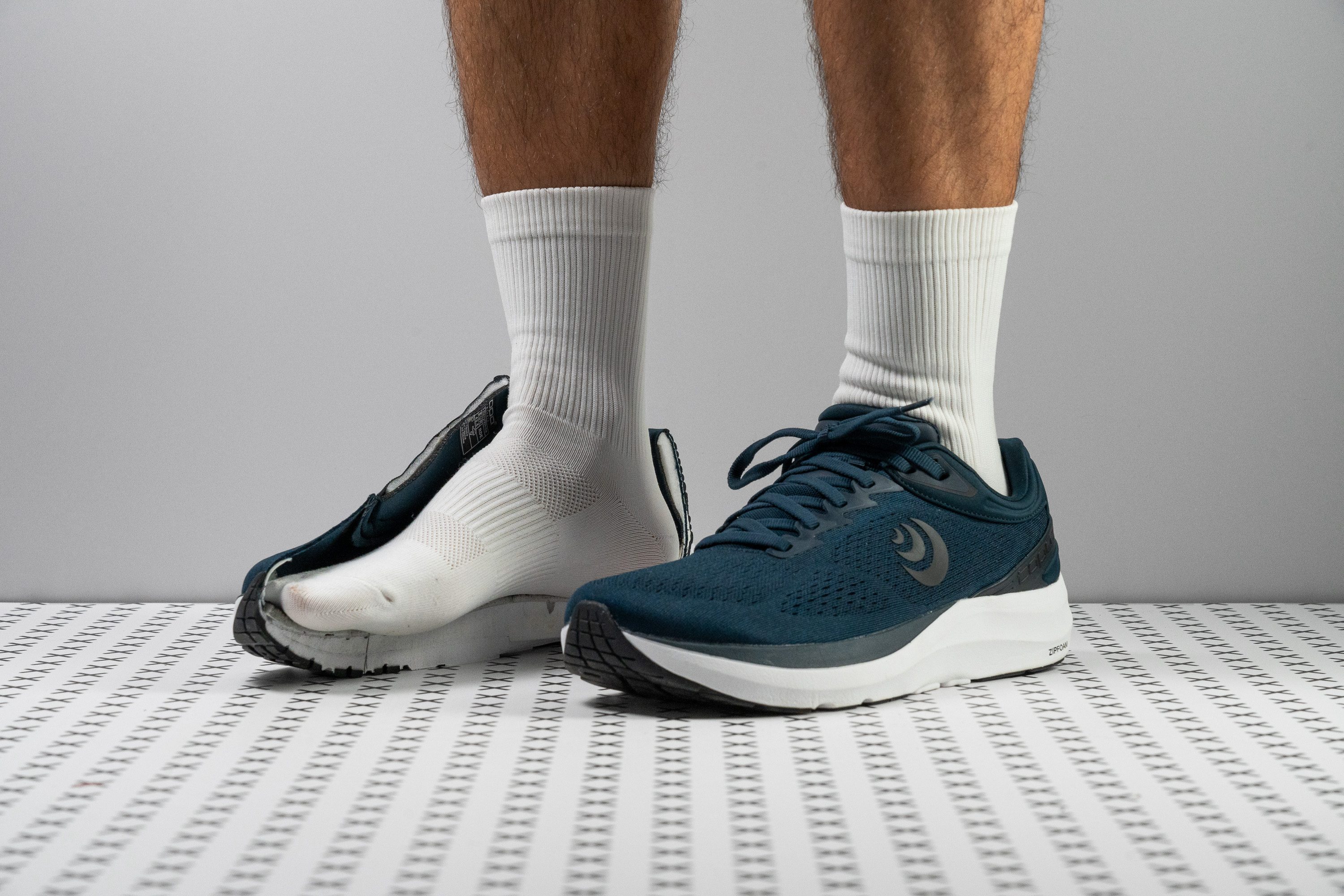Nuestra conclusión
Pros
- Parte delantera espaciosa y en forma de pie
- Versátiles como zapatillas de entrenamiento diario
- Ideales si tienes pies voluminosos
- Ligeras
- Plantilla Ortholite premium
- Estupendas para los corredores de metatarsos y de mediopié
- Cómodas también para caminar
- Pisada estable
Contras
- Necesitan una espuma mejor
- Se sienten firmes
- No son aptas para pies estrechos
- No son aptas para pies estrechos
Veredicto de los usuarios
- Top 28% entre Zapatillas de running para asfalto
- Top 28% entre zapatillas de running neutras
Comparativa
Las zapatillas de running más parecidas
+ + Añadir unas zapatillas | |||||
|---|---|---|---|---|---|
| Puntuación global | 89 Notables | 84 Buenas | 85 Buenas | 88 Notables | |
| Precio | 165 € | 150 € | 140 € | 90 € | |
| Pace | Correr a diario | Correr a diarioTempo / series | Correr a diario | Correr a diario | |
| Absorción de impactos | Moderada | Moderada | Moderada | Moderada | |
| Retorno de energía | Bajo | Bajo | Bajo | Bajo | |
| Tracción | Moderada | Alta | Moderada | Alta | |
| Arch support | Neutral | Neutral | Neutral | Neutral | |
| Peso laboratorio Peso marca | 9.5 oz / 269g 9.2 oz / 261g | 7.7 oz / 217g 7.6 oz / 215g | 10.5 oz / 298g 11.1 oz / 314g | 9.2 oz / 261g 9.3 oz / 263g | |
| Lightweight | ✗ | ✓ | ✗ | ✗ | |
| Drop laboratorio Drop marca | 5.8 mm 5.0 mm | 5.9 mm 5.0 mm | 5.2 mm 5.0 mm | 6.0 mm 6.0 mm | |
| Técnica de carrera | Medio/antepié | Medio/antepié | Medio/antepié | Medio/antepié | |
| Talla | Tallan bien | Media talla más pequeñas | Tallan bien | Tallan bien | |
| Rigidez de la mediasuela | Blanda | Blanda | Equilibrada | Equilibrada | |
| Diferencia de la rigidez de la mediasuela en frío | Grande | Pequeña | Normal | Pequeña | |
| Durabilidad de la parte delantera | Decente | Mala | Decente | Mala | |
| Durabilidad del acolchado del talón | Alta | Alta | Alta | Media | |
| Durabilidad de la suela exterior | Buena | Decente | Buena | Buena | |
| Transpirabilidad | Media | Alta | Media | Alta | |
| Anchura / ajuste | Media | Ancha | Estrecha | Media | |
| Anchura de la parte delantera | Ancha | Ancha | Estrecha | Media | |
| Flexibilidad | Moderada | Moderada | Rígida | Rígida | |
| Rigidez torsional | Rígidas | Rígidas | Moderadas | Rígidas | |
| Rigidez del contrafuerte del talón | Rígido | Moderado | Rígido | Moderado | |
| Talón laboratorio Talón marca | 32.6 mm 32.0 mm | 32.8 mm 34.5 mm | 33.2 mm 30.0 mm | 32.7 mm 29.0 mm | |
| Antepié laboratorio Antepié marca | 26.8 mm 27.0 mm | 26.9 mm 29.5 mm | 28.0 mm 25.0 mm | 26.7 mm 23.0 mm | |
| Anchuras disponibles | EstándarAncho | Estándar | Estándar | Estándar | |
| Orthotic friendly | ✓ | ✓ | ✓ | ✓ | |
| Estación | Todas las estaciones | VeranoTodas las estaciones | Todas las estaciones | VeranoTodas las estaciones | |
| Removable insole | ✓ | ✓ | ✓ | ✓ | |
| Clasificación | #95 Top 26% | #242 34% inferior | #225 39% inferior | #133 Top 36% | |
| Popularidad | #175 Top 48% | #132 Top 36% | #43 Top 12% | #274 26% inferior |
Quién debería comprárselas
En nuestra opinión, las Topo Phantom 3 son una elección estupenda para:
- Los corredores a los que les gusta la pisada natural de las Altra pero prefieren un drop un poco más alto.
- Los que tienen pies muy voluminosos que están buscando un upper amplio que ofrezca mucho espacio tanto vertical como horizontal.
- Los corredores de mediopié y de metatarsos que están buscando unas zapatillas de entrenamiento diario espaciosas que les dejen estirar los dedos sin problema.
- Cualquiera que pase de las marcas más populares.
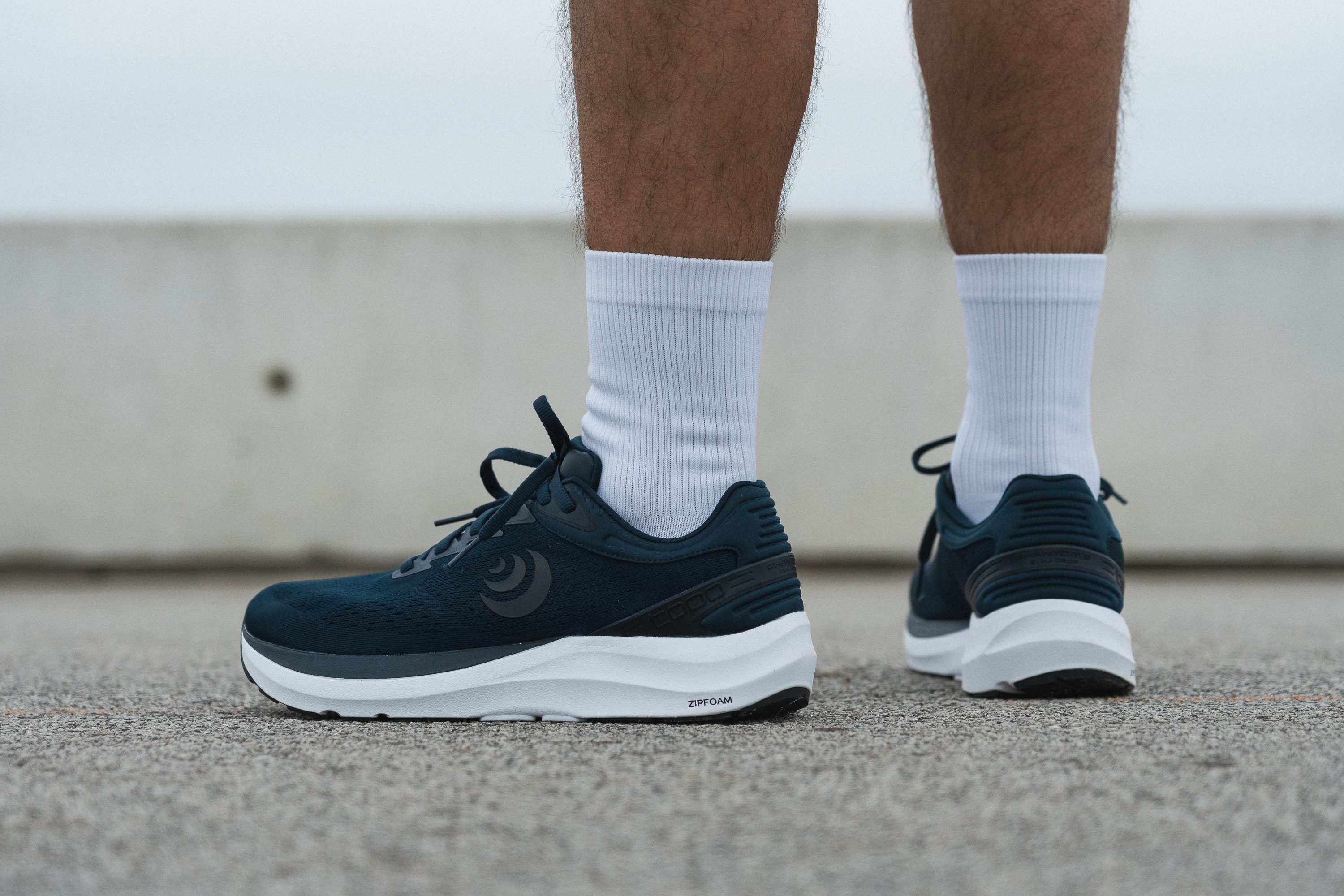
Quién NO debería comprárselas
Creemos que los corredores que estén buscando una mediasuela con rebote y mucha energia deberían ir a por otra cosa, ya que las Phantom 3 no ofrecen ese impulso. Si quieres ese extra de rebote, te recomendamos las ASICS Novablast 5 o las PUMA Velocity Nitro 3, que ofrecen una amortiguación más suave y llena de energía.
En nuestra opinión, los corredores con pies estrechos probablemente tendrán problemas con la parte delantera en forma de pie de estas zapatillas. Puede que a algunas personas les parezca demasiado y que el ajuste termine siendo inseguro. Si prefieres un cierre más ceñido en el antepié, te recomendamos que le eches un vistazo a las Hoka Mach 6 o a las Nike Pegasus 41, ya que ambas tienen un diseño más ajustado por un precio parecido.
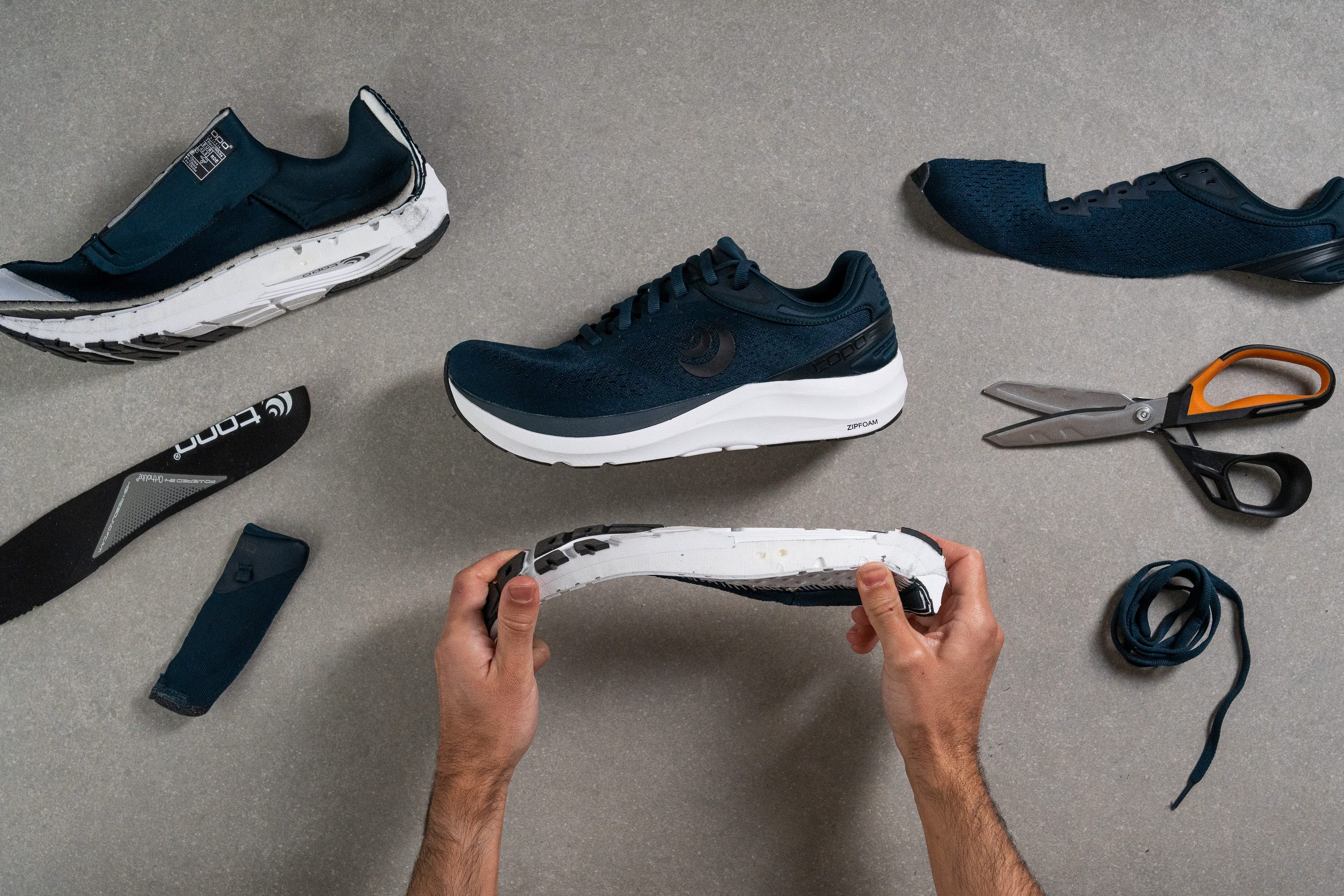
Amortiguación
Shock absorption
Si crees que las Topo Atmos tienen demasiada amortiguación... las Phantom 3 son tus zapatillas. Te dejan sentir mejor el terreno bajo los pies y la experiencia es más cercana al suelo. Su absorción de impactos es baja: 113 SA en el talón y 96 SA en el antepié.

| Topo Phantom 3 | 113 SA |
| Media | 129 SA |
Energy return
Las Phantom 3 comparten la misma espuma que sus hermanas, así que el retorno de energía... deja bastante que desear. Con solo un 48,8 % en el talón y un 53,0 % en el antepié, creemos que ya es hora de actualizar estas zapatillas y ponerles Pebax. ¡Venga, Topo!
| Topo Phantom 3 | 48.4% |
| Media | 58.5% |
Altura de la suela en la zona del talón
Según nuestros calibres digitales, las Phantom 3 ofrecen una amortiguación fiable en el talón con una suela de 32,6 mm de altura, así que disfrutamos de una experiencia equilibrada entre sujeción y estabilidad.
Creemos que esto hace que sean una opción sólida para los talonadores que están buscando unas zapatillas de entrenamiento con una amortiguación moderada para sus tiradas diarias, que no sean excesivamente altas pero que proporcionen una absorción del impactos eficaz para las distancias cortas y medias. Para distancias más largas, se las recomendaríamos principalmente a los corredores ligeros, ya que su amortiguación puede no ser suficiente para los atletas más pesados que quieran correr más de 21 km.
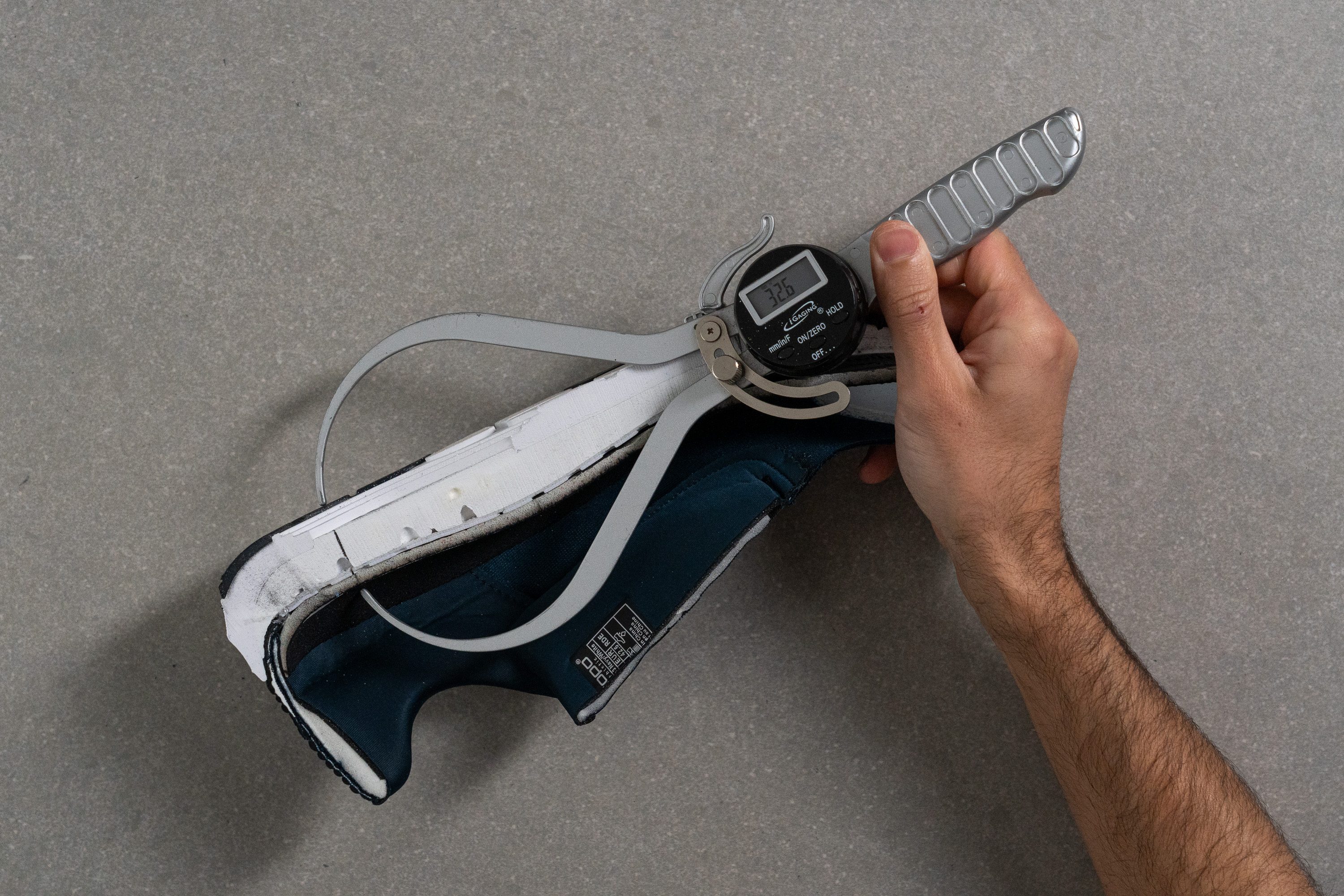
| Topo Phantom 3 | 32.6 mm |
| Media | 34.8 mm |
Altura de la suela en el antepié
La suela en el antepié mide 26,8 mm y, gracias al drop moderado de estas zapatillas, se sienten un poquito más amortiguadas que, por ejemplo, unas Pegasus. En nuestra experiencia, proporcionan una protección adecuada para la mayoría de las distancias y se adaptan a muchos tipos de corredores distintos.
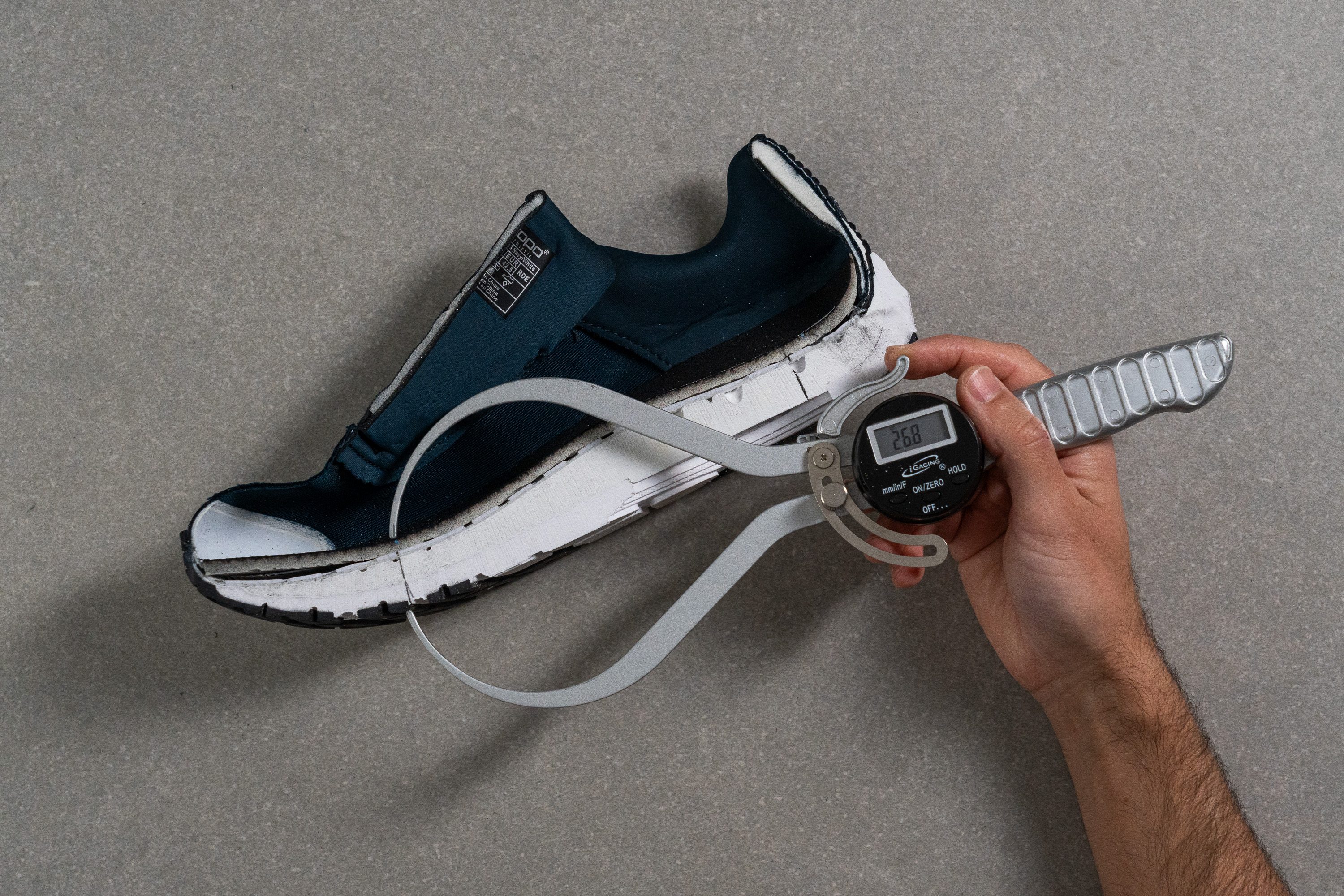
| Topo Phantom 3 | 26.8 mm |
| Media | 26.2 mm |
Drop
Como decíamos, el drop de estas zapatillas es moderado, y cuando lo medimos nos dio 5,8 mm. Oficialmente, Topo dice que es de 5 mm; pero bueno, es una diferencia insignificante.
Según nuestra experiencia, este drop hace que las zapatillas estén en un cómodo punto medio entre los modelos con drop cero y las zapatillas de entrenamiento diario convencionales, que suelen tener un drop de 10 mm. Esto hace que sean ideales para los corredores de mediopié y de metatarsos.
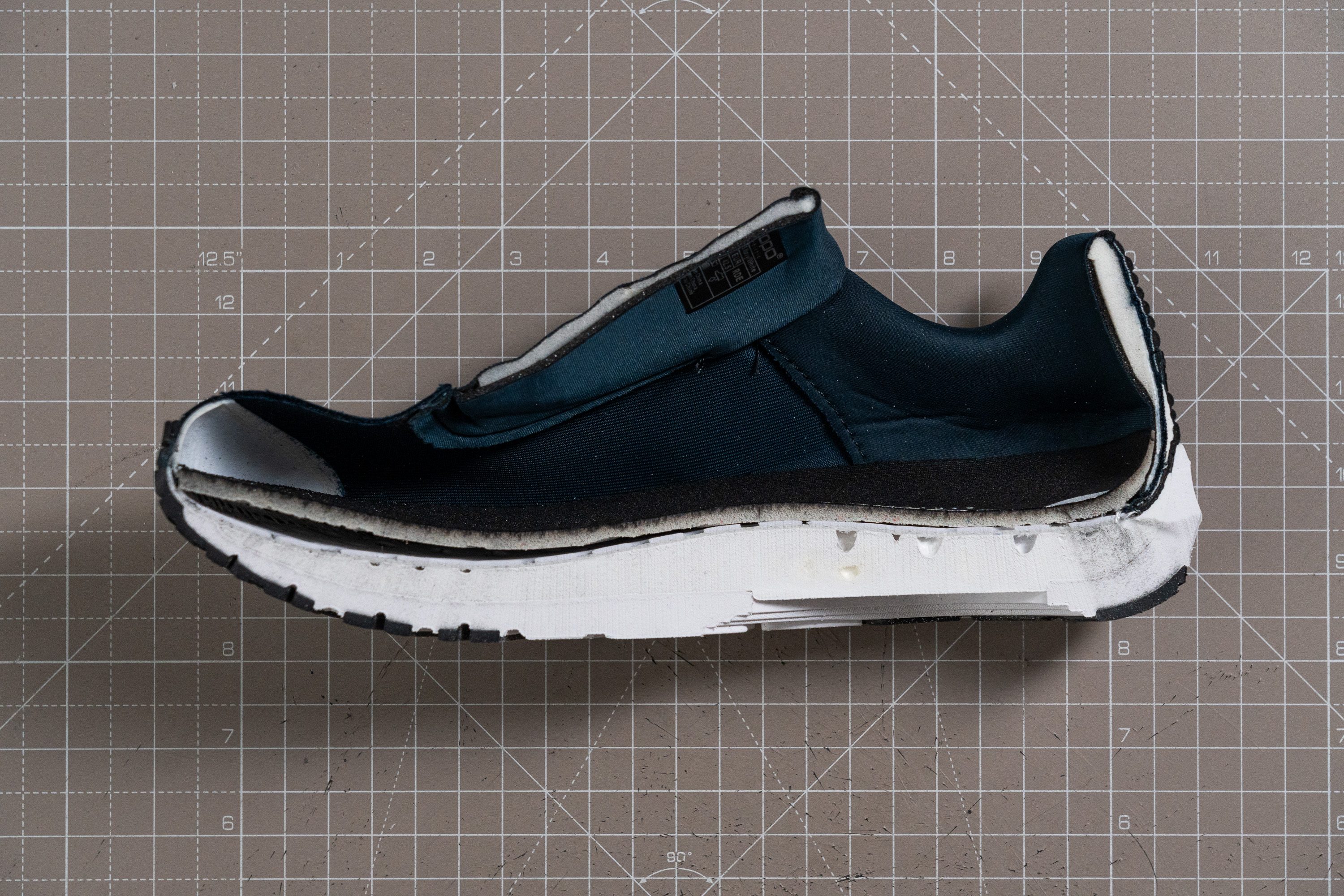
| Topo Phantom 3 | 5.8 mm |
| Media | 8.6 mm |
Suavidad de la mediasuela
A ver, para aclarar las cosas antes de ponernos más técnicos: las Phantom 3 no son tan blanditas como una nube. La sensación es más bien equilibrada, inclinándose más hacia el lado firme. Esto hace que sean una opción estupenda para los corredores a los que les gustan las zapatillas de entrenamiento diario sin florituras que eran populares hace algunos años.
Lo mejor de todo es que, aunque tienen un precio moderado y un exterior que... no nos dice gran cosa, las Phantom 3 están diseñadas con una estructura de doble espuma. Y es que precisamente por esto mismo es tan importante cortar las zapatillas por la mitad, ¡porque tienen detalles ocultos!
Las dos capas de espuma de las Topo Phantom 3 utilizan ZipFoam, una mezcla de EVA y TPU que es un poquito reactiva pero muy duradera. ¿Lo malo? Pues que también es muy pesada. Cuando medimos la capa de arriba, nuestro calibre marcó 19,7 HA, así que en vez de ser suave, este modelo se siente equilibrado bajo los pies.
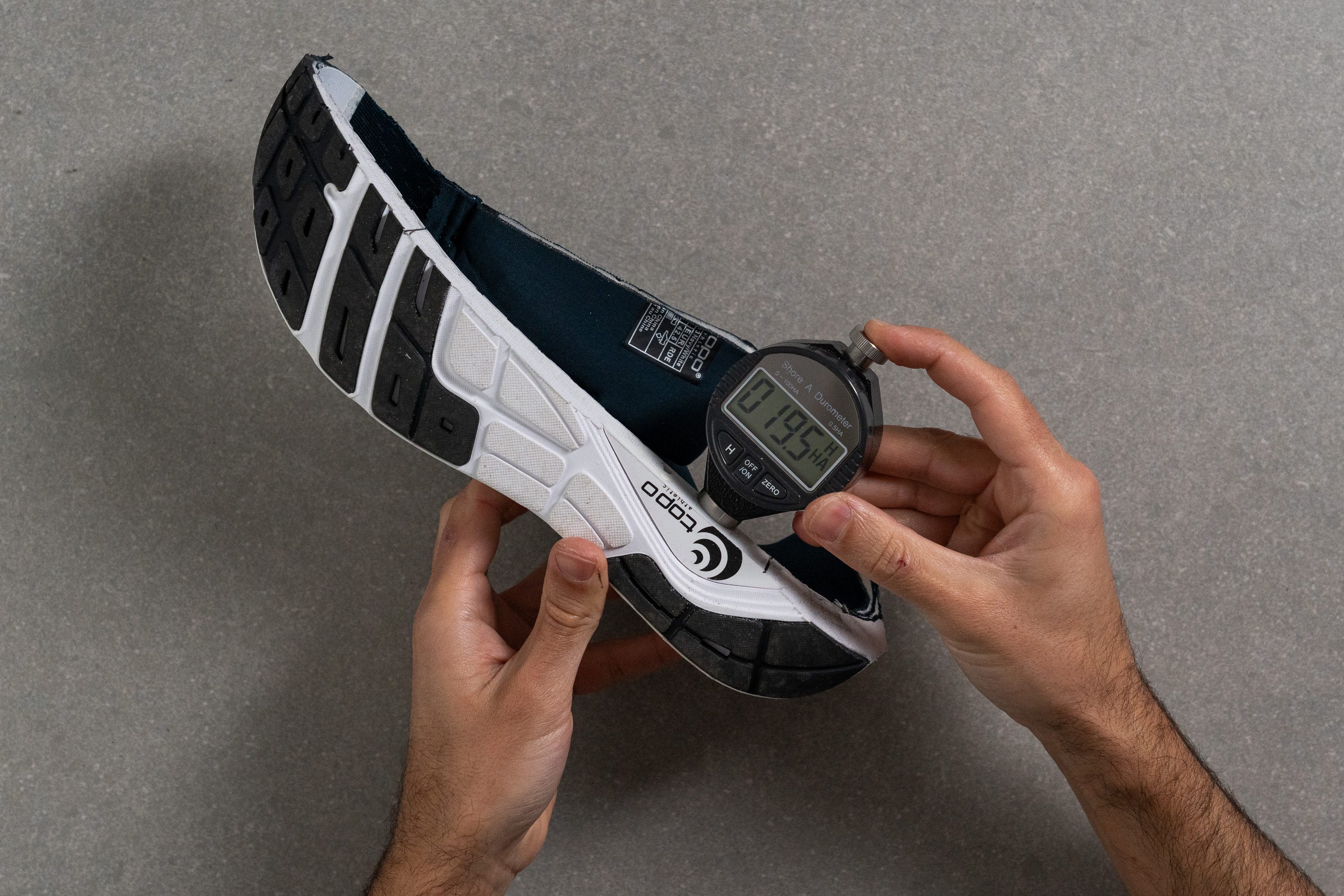
| Topo Phantom 3 | 19.7 HA |
| Media | 20.4 HA |
Suavidad de la espuma secundaria
Debajo de la primera capa de ZipFoam hay otra capa más densa que obtuvo un resultado de 24,7 HA cuando la analizamos con nuestro durómetro. Esta base más firme mejora la estabilidad general de las zapatillas y reduce ligeramente su retorno de energía, lo que hace que la pisada se centre más en el control que en el rebote.
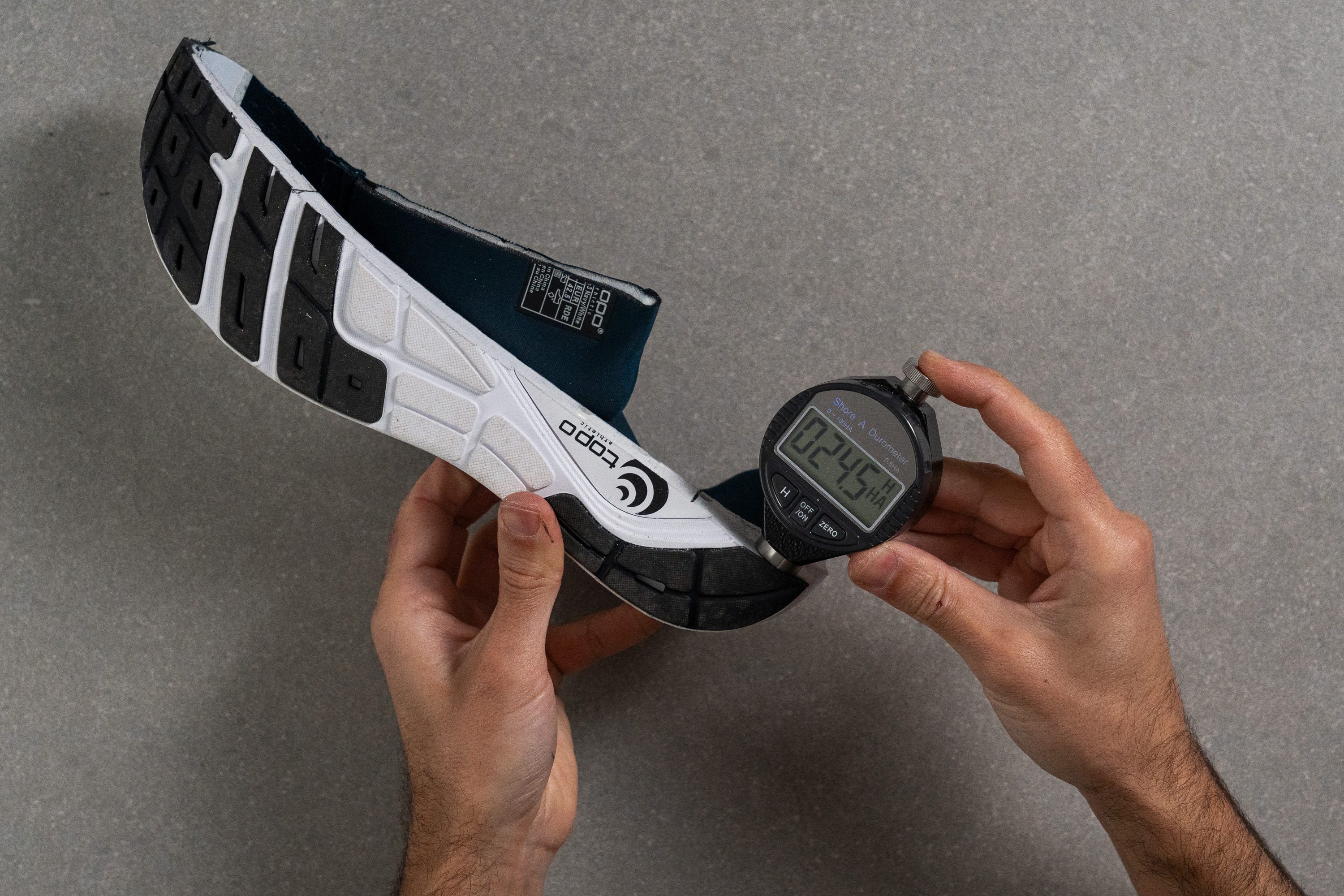
| Topo Phantom 3 | 24.7 HA |
| Media | 22.7 HA |
Rocker
Aunque unas zapatillas flexibles y no maximalistas para el día a día no necesitan un rocker que sea altísimo, Topo decidió añadir una pequeña curvatura en la puntera que alcanza los 4 cm. Esta elección de diseño nos parece razonable, ya que hace que la pisada se sienta natural a la vez que ayuda sutilmente a que te muevas hacia adelante.
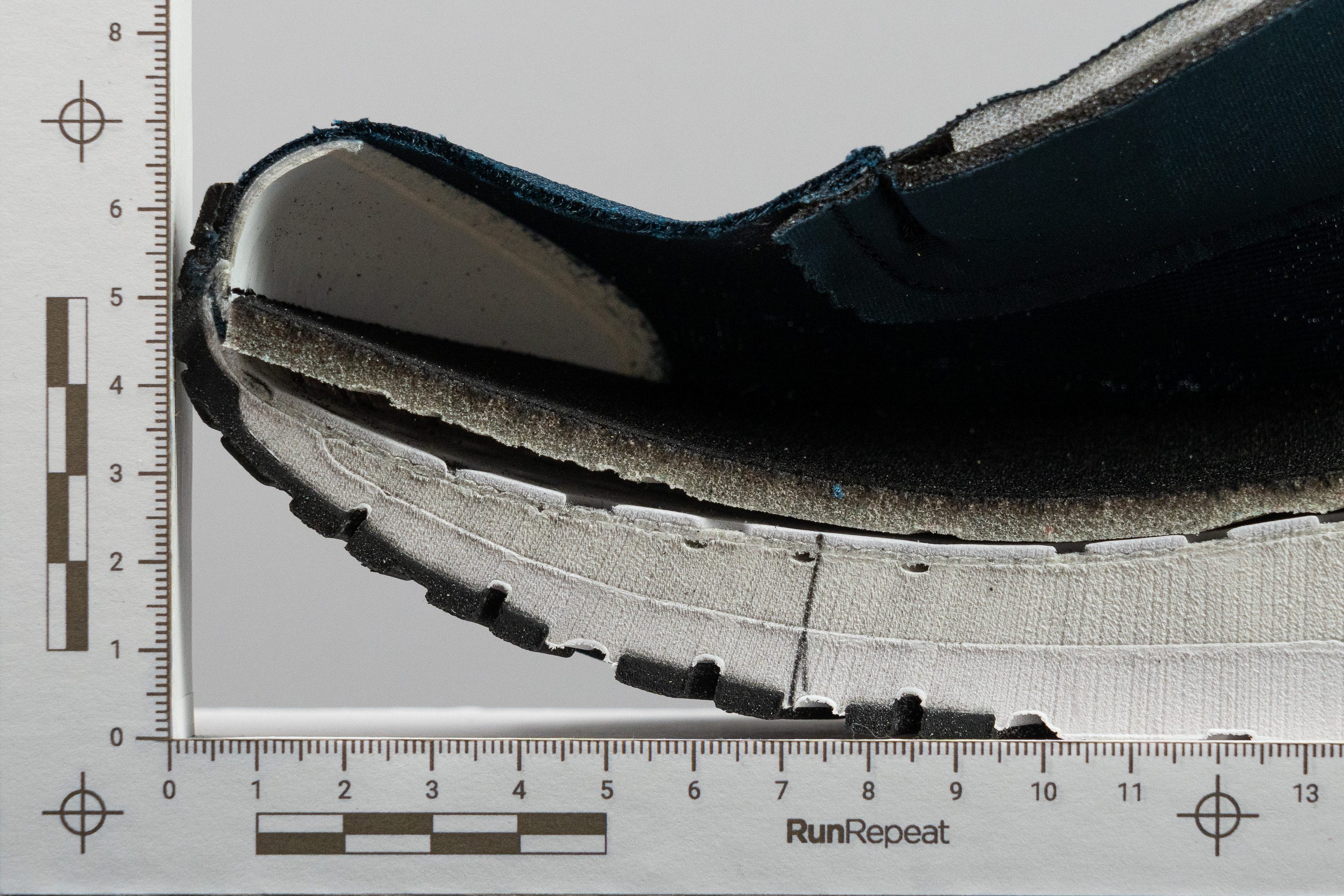
Tallaje y ajuste
Talla
Las Topo Phantom 3 tallan bien (70 votos).
Anchura / Ajuste
El ajuste de las Phantom 3 es una de las características que más controversia ha creado: a algunos corredores les encanta su diseño único, mientras que otros tendrán problemas con la forma de pie que tiene su parte delantera. Con este tipo de zapatillas, la verdad es que rara vez hay un término medio.
Para poder decirte con precisión cómo es el ajuste de estas Topo, las llenamos con nuestro gel personalizado y esperamos a que se solidificase en el congleador. Después de 2 horas, sacamos el molde y medimos su anchura. Nuestro calibre marcó unos... sospechosos 96,5 mm, pero es que solo este número no nos puede contar toda la historia.
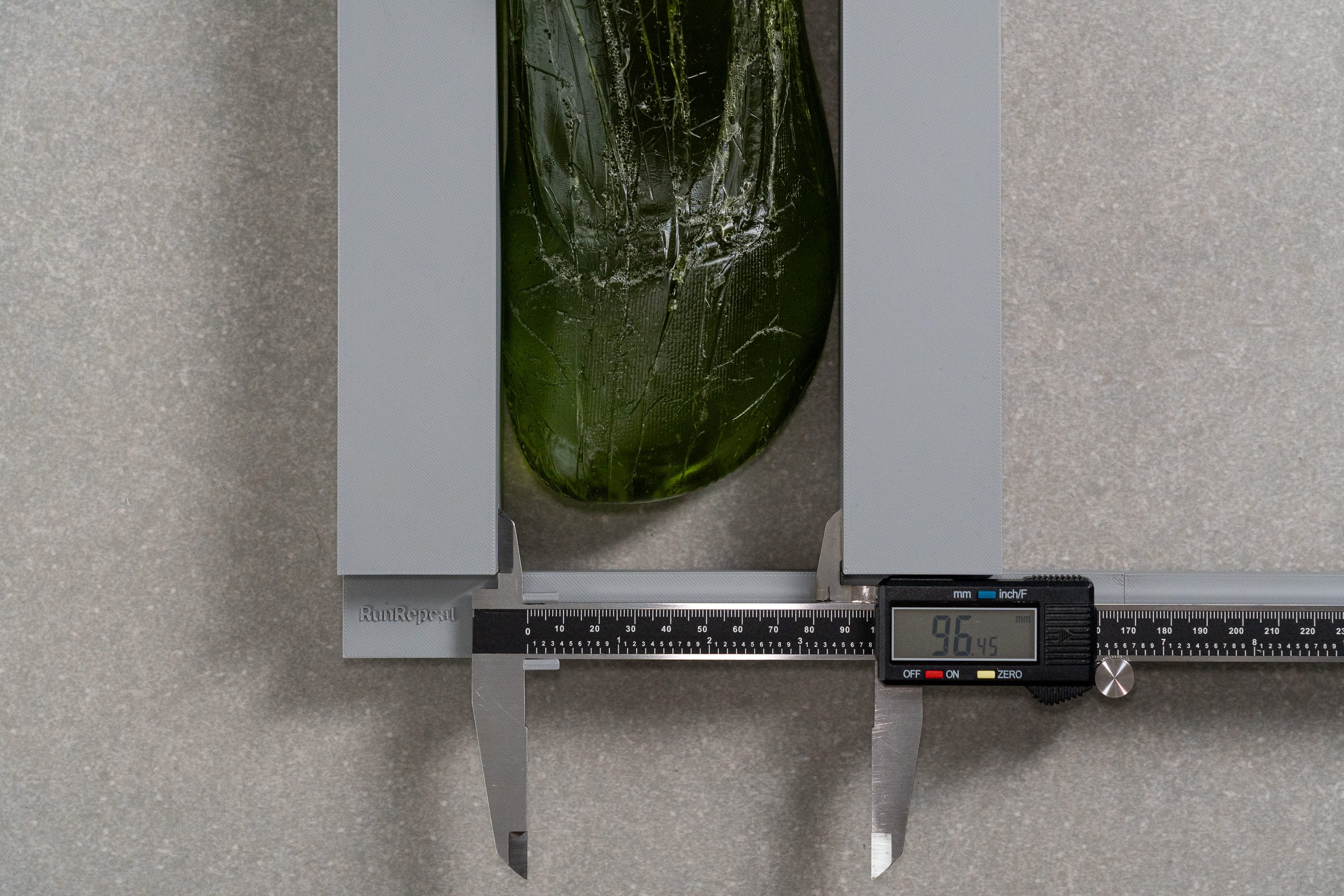
| Topo Phantom 3 | 96.5 mm |
| Media | 95.1 mm |
Anchura de la parte delantera
Según nuestra experiencia, las zapatillas de running que se centran en que los pies tengan espacio están diseñadas para adaptarse a la forma natural del pie de las personas, ¡como hacen las Phantom 3!
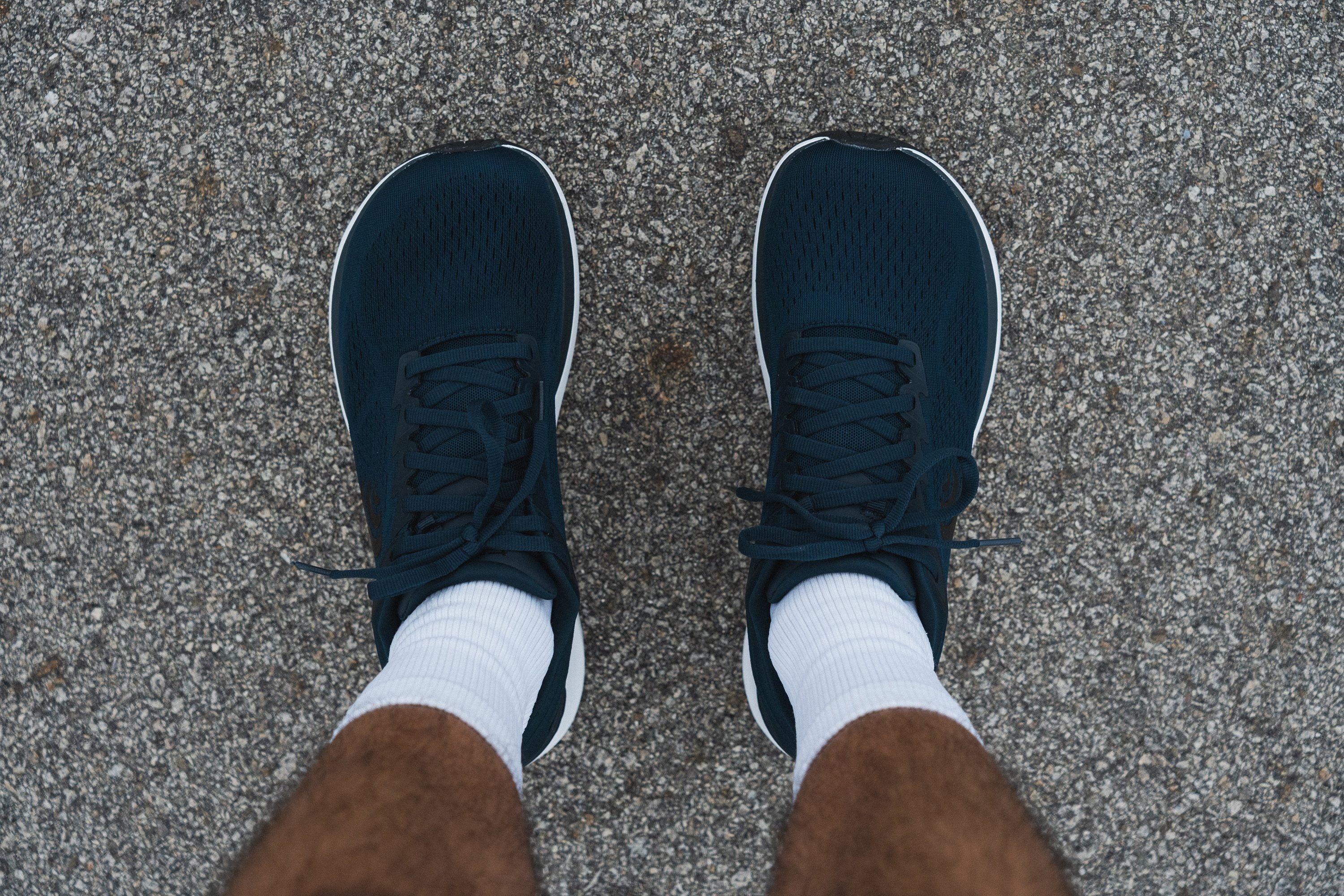
Con una anchura de 82,1 mm en la zona del dedo gordo, este modelo tiene una parte delantera muy redondeada y un diseño que no se estrecha mucho hacia la punta. Vamos, que pudimos separar los dedos sin problema.
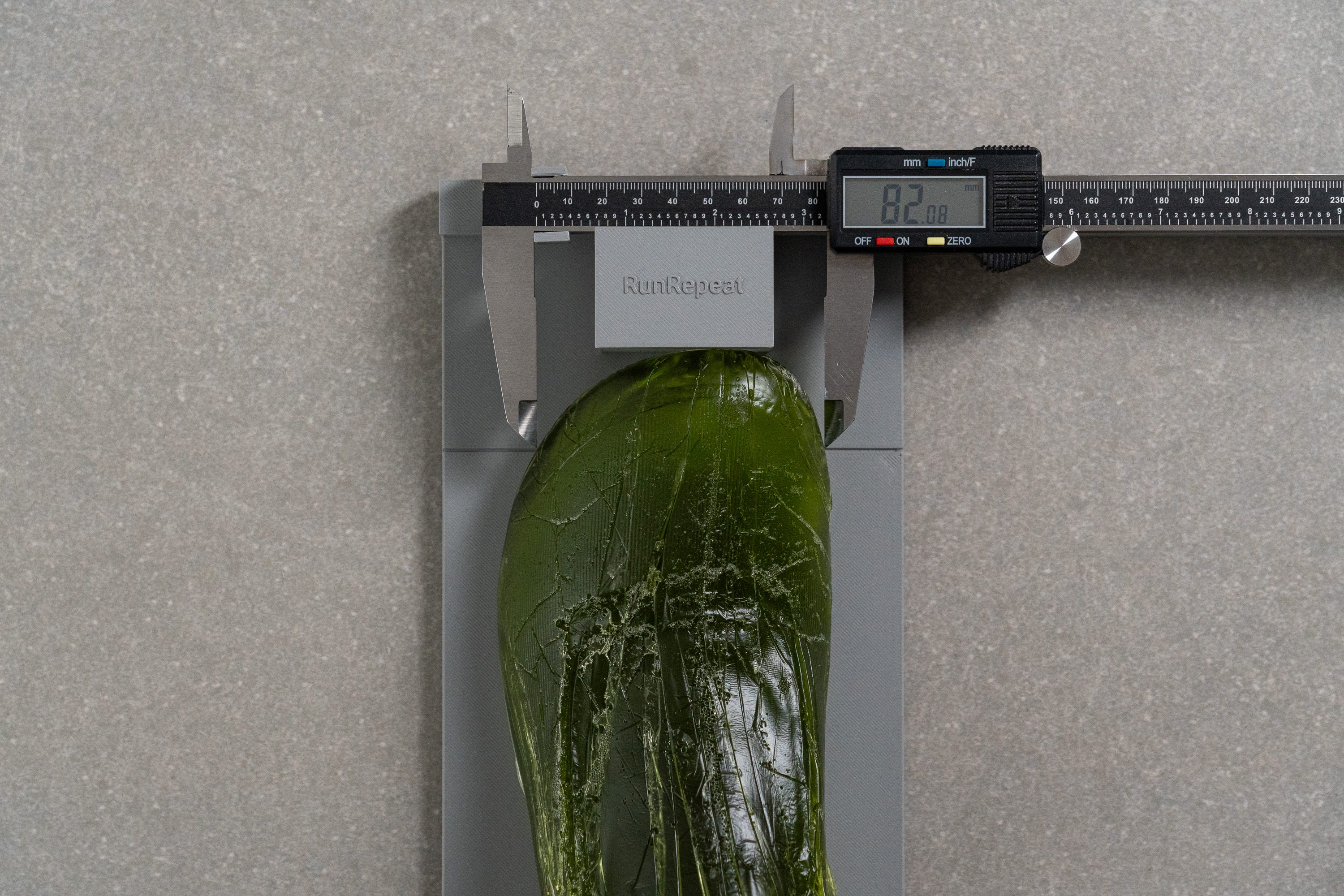
| Topo Phantom 3 | 82.1 mm |
| Media | 73.3 mm |
Altura de la parte delantera
También hemos medido el espacio vertical de la parte delantera, que es altísimo y alcanza 29,2 mm. Esto hace que las Phantom 3 sean una opción excelente para los corredores con pies de gran volumen; es decir, los que tienen no solo un antepié ancho, sino también alto.
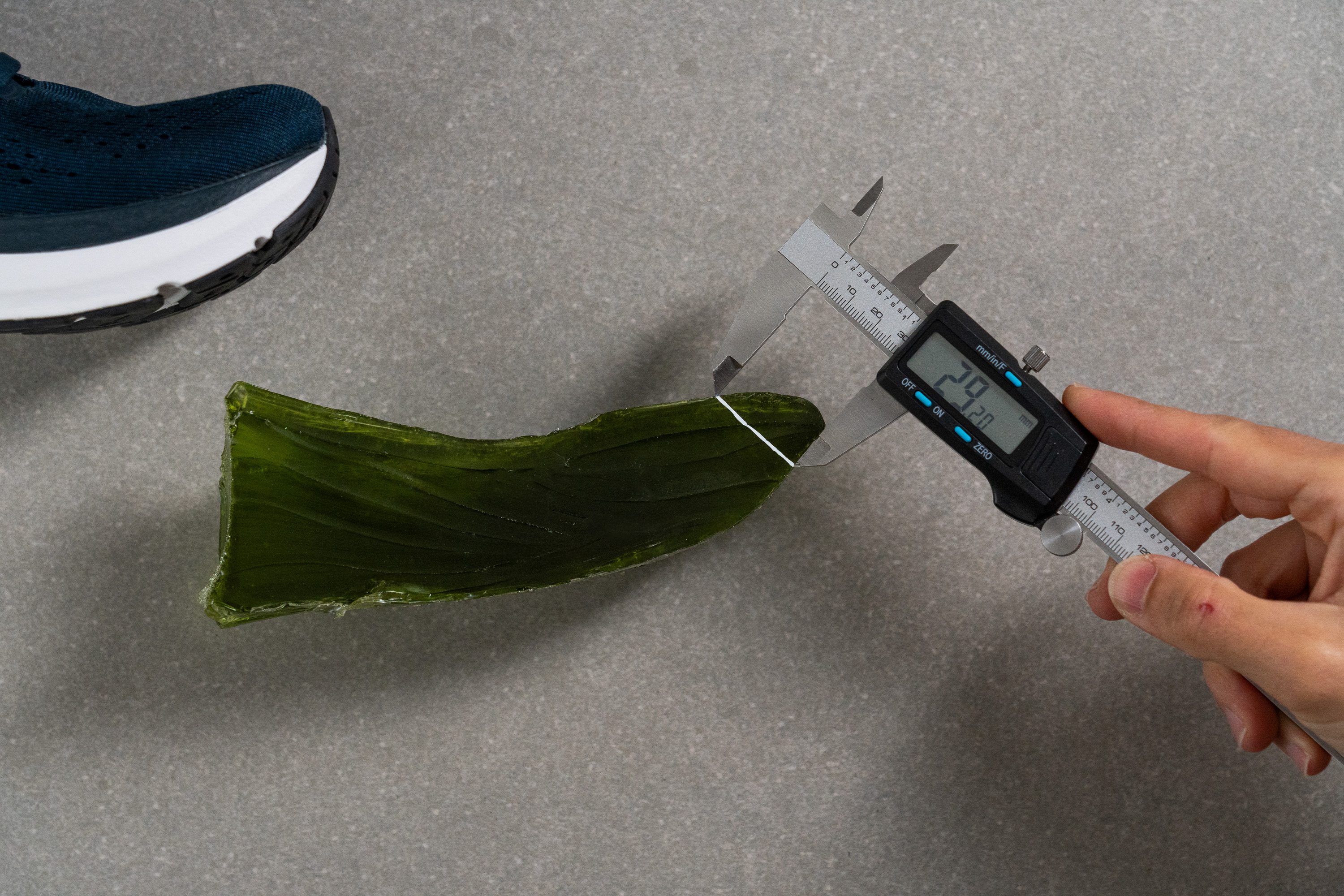
| Topo Phantom 3 | 29.2 mm |
| Media | 27.1 mm |
Tracción / Agarre
Traction test
Cuando analizamos la tracción de esta suela exterior, se llevó un resultado de 0,43, que no está mal para unas zapatillas de entrenamiento diario con un precio competitivo, la verdad. Aunque no han conseguido subirse al podio, proporcionan un agarre fiable en asfalto seco,y se adaptan a la lluvia ligera gracias a su agarre, evitando resbalones inesperados y mejorando nuestra confianza.
| Topo Phantom 3 | 0.43 |
| Media | 0.48 |
Diseño de la suela exterior
La suela exterior tiene un poco de caucho en el retropié y en el antepié, pero la mayor parte del mediopié deja la mediasuela expuesta. Esto nos hizo dudar un poquito sobre su durabilidad, pero la espuma no está en contacto con el suelo, ya que hay una capa protectora. Pero bueno, que para unas zapatillas de entrenamiento diario, la verdad es que nos habría gustado un poquito más de caucho.
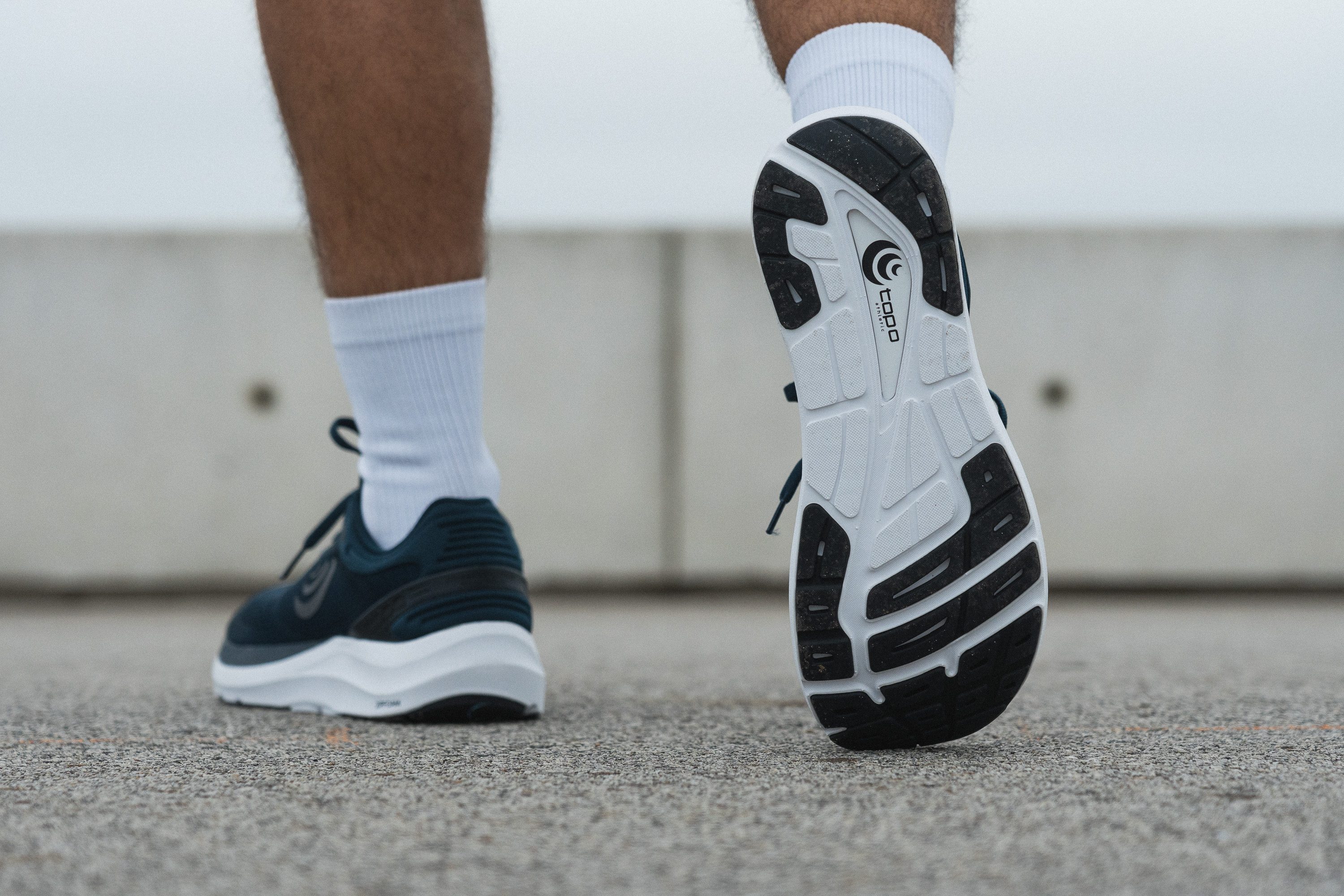
Flexibilidad / Rigidez
Nuestra prueba de flexión de 30 grados evalúa la rigidez longitudinal, y solo necesitamos 12,2 N de fuerza para doblar las Phantom 3. Esto entra dentro del rango medio para las zapatillas de entrenamiento diario, y es un resultado lo suficientemente bajito como para proporcionarnos una buena experiencia al trotar o al caminar.
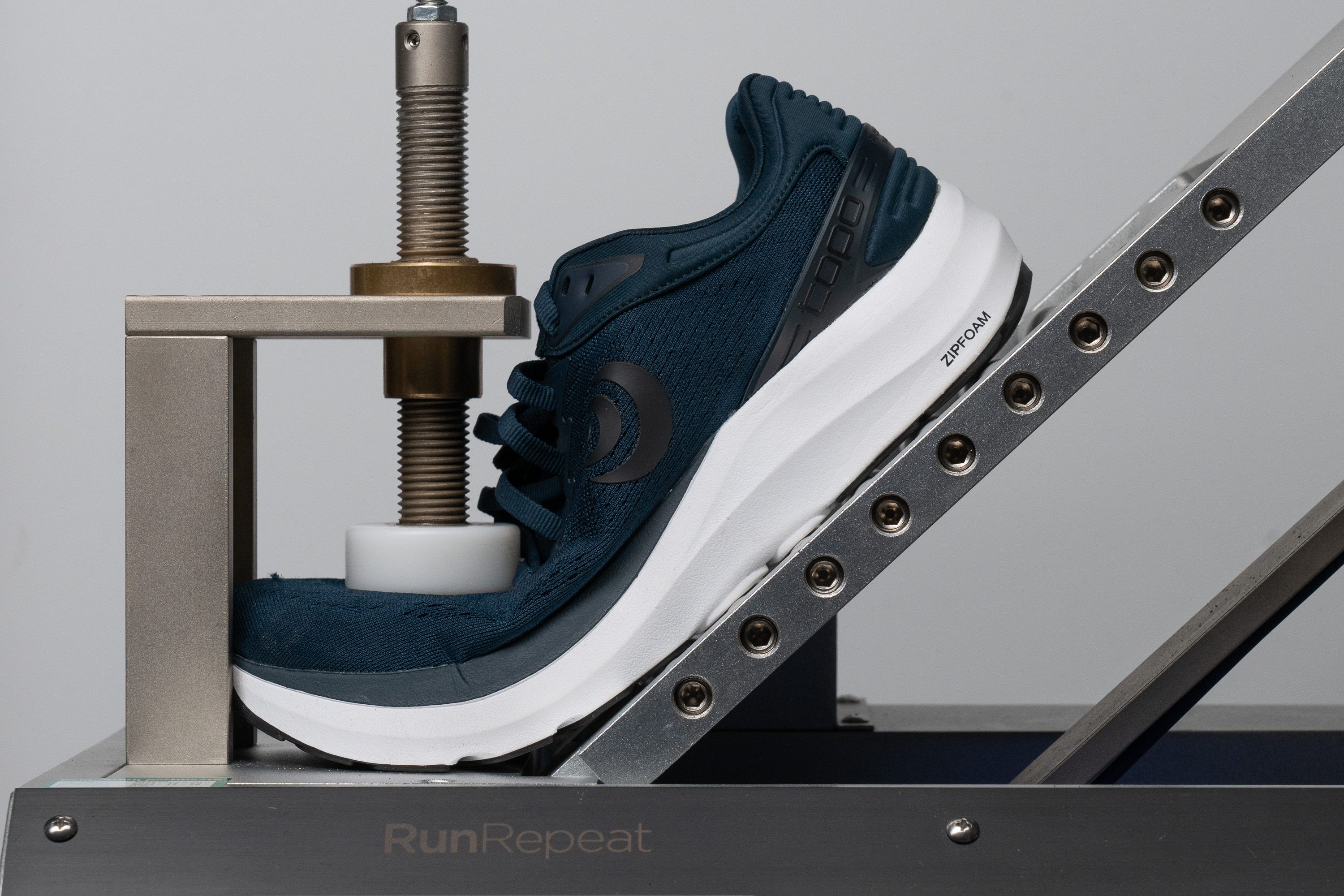
| Topo Phantom 3 | 12.2N |
| Media | 15.3N |
Peso
Con un peso de 269 gramos, las Topo Athletic Phantom 3 entran dentro de lo que nos esperábamos teniendo en cuenta la altura de su suela y las dimensiones, y la verdad es que estamos contentos con este resultado. En nuestra opinión, aunque su peso no es una ventaja importante, tampoco es un inconveniente.
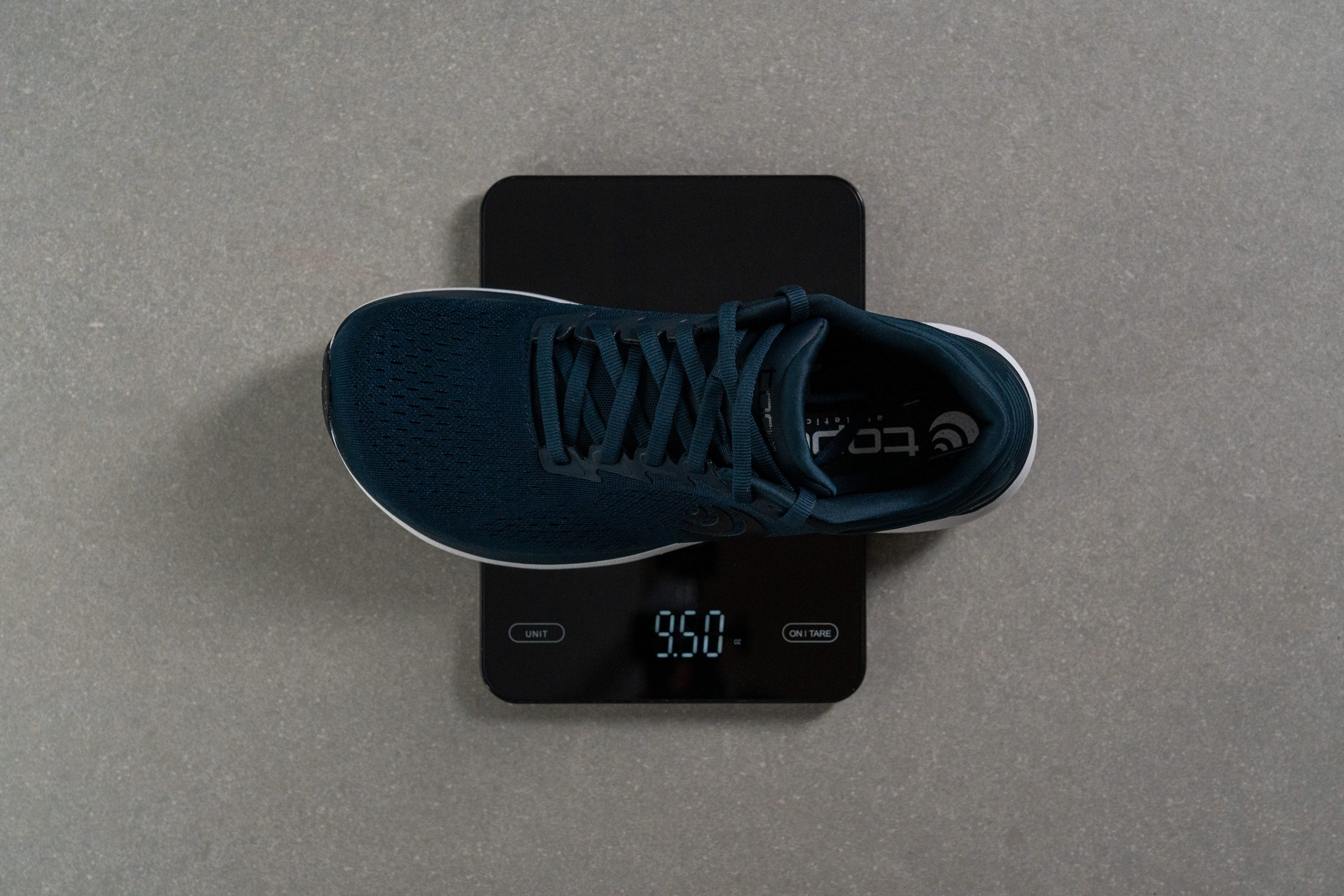
| Topo Phantom 3 | 9.5 oz (269g) |
| Media | 9.3 oz (264g) |
Transpirabilidad
Las Phantom 3 han conseguido resultados estándar en prácticamente todas nuestras pruebas de laboratorio y, en las pruebas de uso, ya empezamos a sospechar que su transpirabilidad tampoco se saldría de la norma.
Gracias a nuestra máquina de humo, pudimos comprobar que su ventilación es un poquito más baja de loq ue nos esperábamos, que es justo lo que sentimos cuando las llevábamos puestas. Estas Topo se llevaron un 3/5 en transpirabilidad, un resultado que está justo por debajo de la media de las zapatillas para correr por asfalto, confirmando nuestras primeras impresiones sobre su flujo de aire.
Después pusimos su upper frente a una luz para ver qué zonas brillaban. Resulta que el antepié y el mediopié son relativamente finitos, así que la luz pudo pasar, pero el material no consigue ofrecer un flujo de aire lo suficientemente bueno como para poder competir con los modelos más transpirables del mercado.
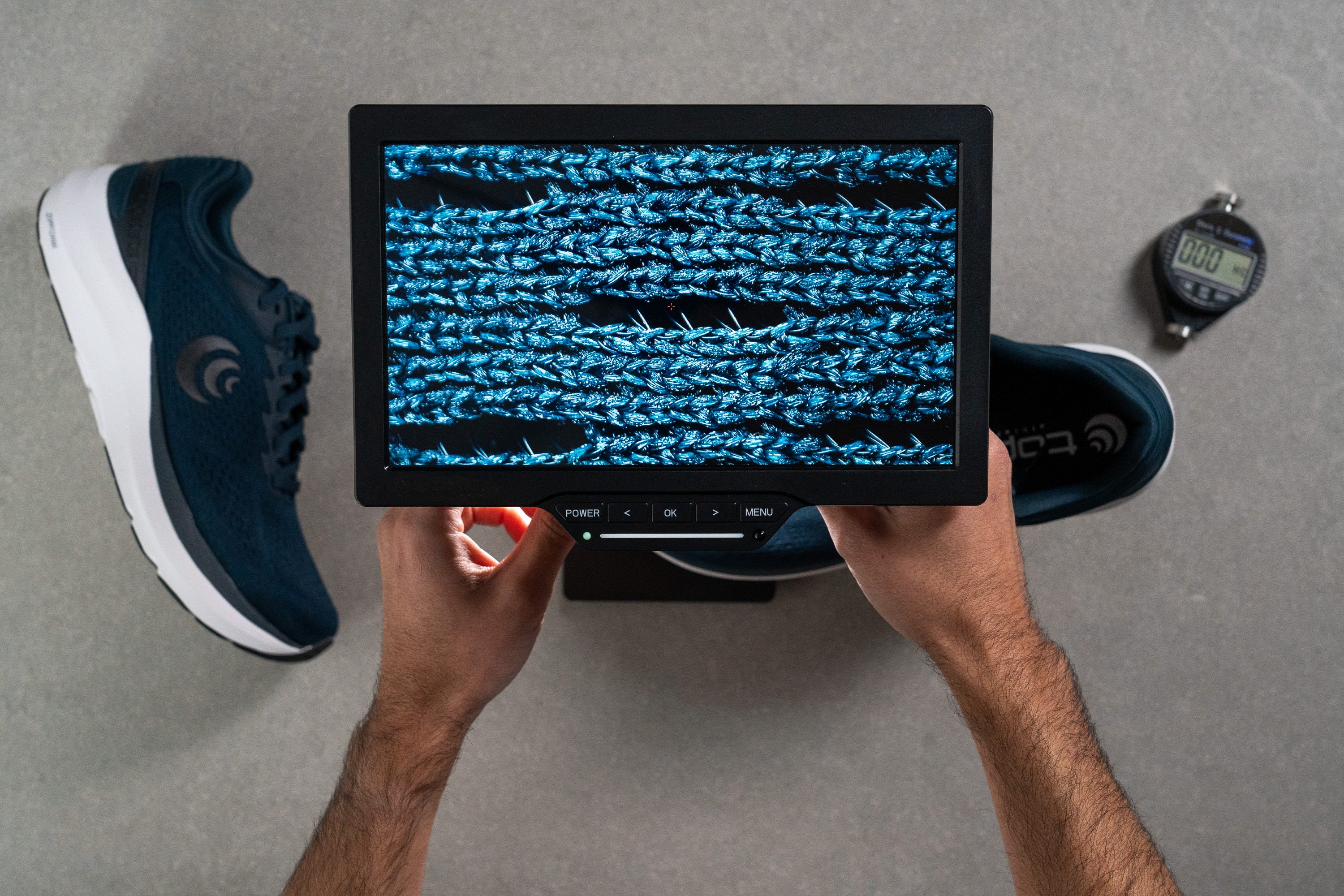
Gracias a nuestro microscopio, vimos que este modelo tenía un montón de agujeritos para el flujo de aire, que son los que le ayudaron a no llevarse una puntuación más baja en transpirabilidad.
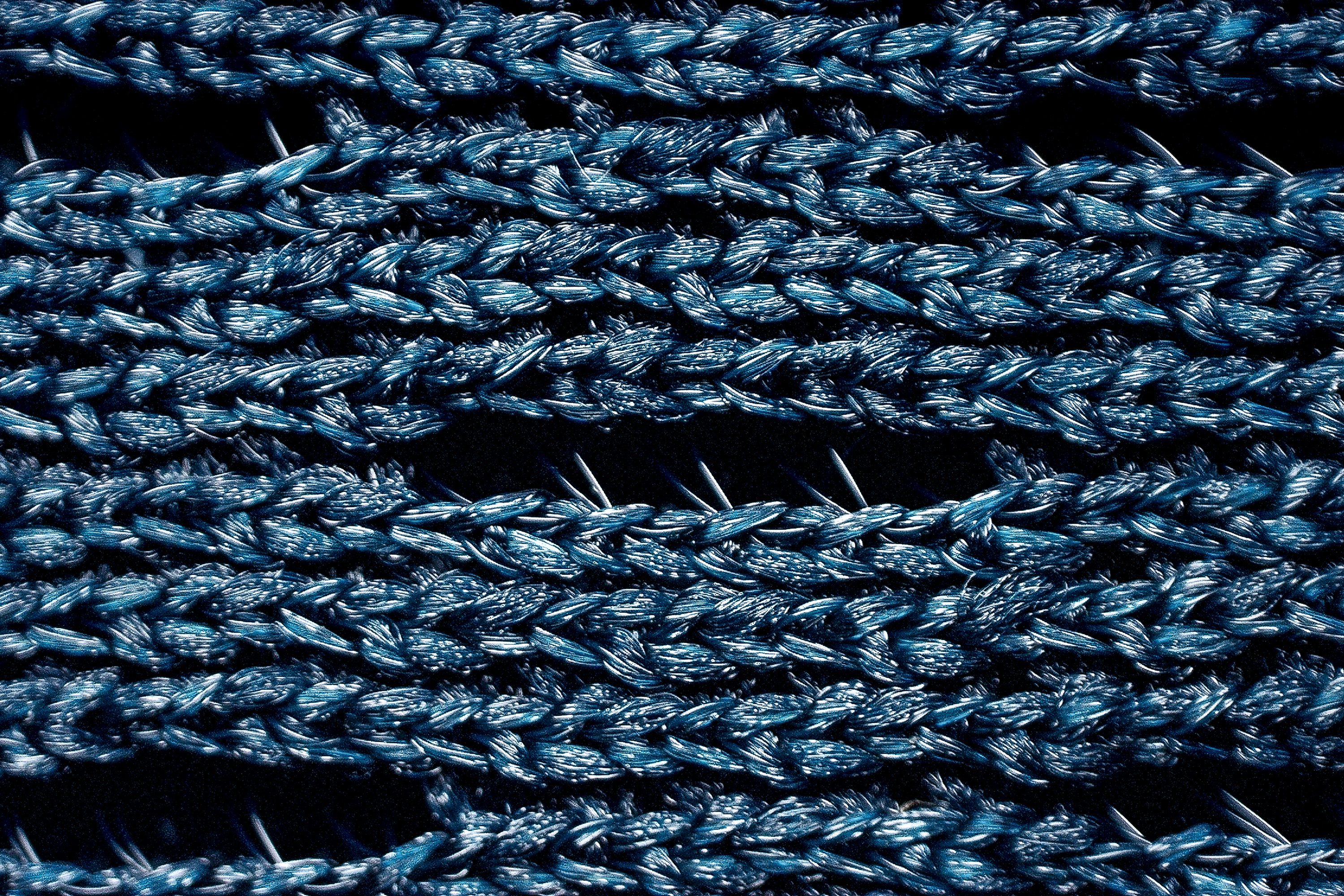
La malla de ingeniería reciclada es estándar para su precio, pero tampoco nos esperábamos materiales de primera calidad en este nivel.
En general, hemos comprobado que el upper cumple todos los requisitos necesarios (ofrece una transpirabilidad decente, está bien estructurado y es cómodo), pero no destaca en ningún aspecto en particular. Al igual que el resto de las Phantom 3, su rendimiento es sólido, pero no sobresaliente.
| Topo Phantom 3 | 3 |
| Media | 3.7 |
Estabilidad
Prueba de estabilidad lateral
Aunque algunos corredores podrían haber preferido una mediasuela que fuese un poquito más blanda, la sensación más firme de las Phantom 3 viene con una ventaja clave: la estabilidad. En serio, creemos que incluso los corredores que necesiten un poquito de estabilidad extra pueden correr cómodamente con estas zapatillas... siempre que sean corredores de mediopié o de metatarsos.
Rigidez torsional
Aunque no tienen placa, las Phantom 3 nos parecieron muy rígidas. Cuando intentamos retorcerlas nos costó muchísimo, así que se llevaron un 4/5 en nuestra prueba. Esto explica que sean más estables que la media, aunque el precio a pagar sea una pisada más natural y flexible.
| Topo Phantom 3 | 4 |
| Media | 3.5 |
Rigidez del contrafuerte del talón
El contrafuerte del talón es bastante rígido, así que se llevó otro 4/5 en nuestra prueba.
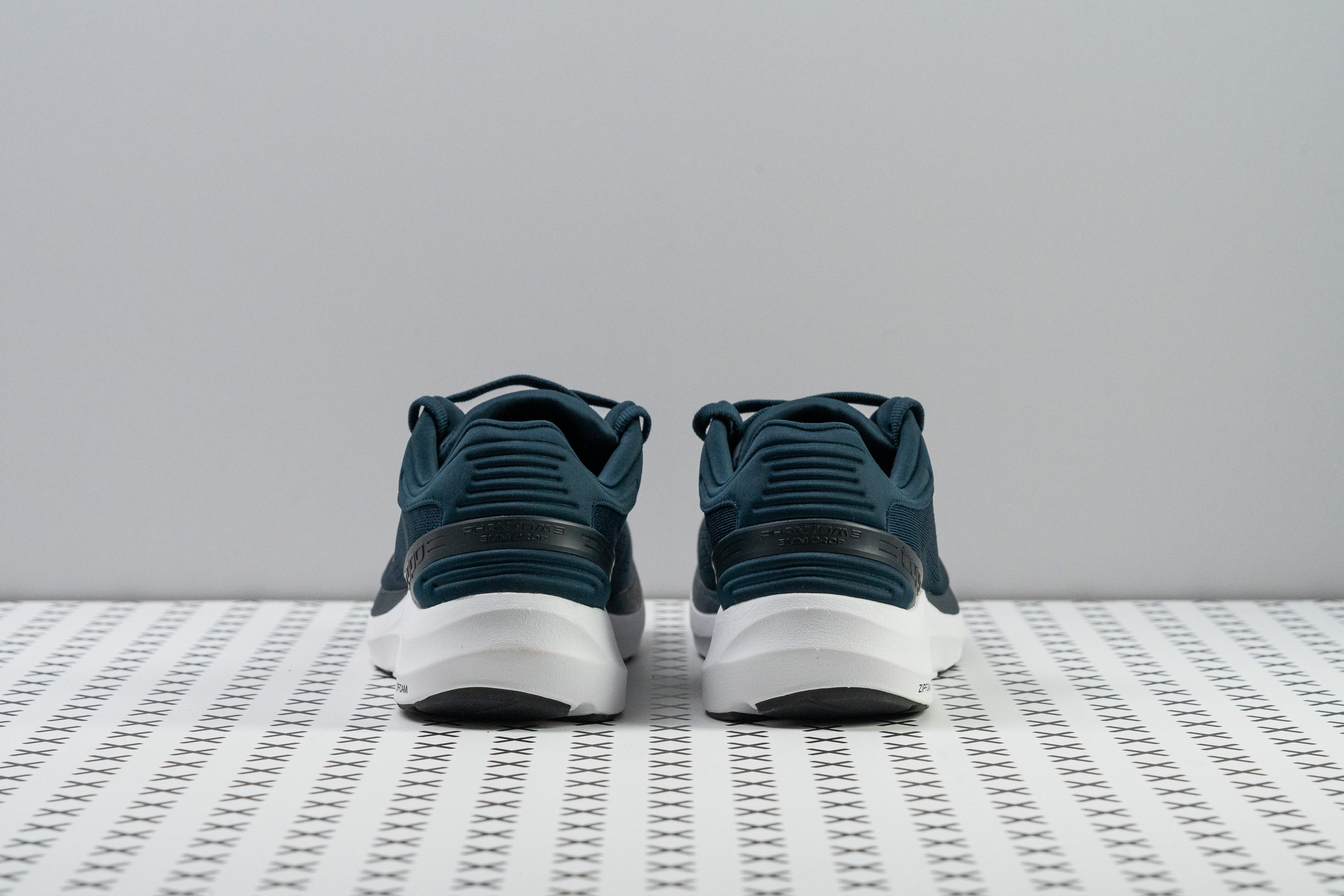
La verdad es que no nos sorprendió, ya que al talón lo envuelve una pieza de plástico rígido. Por suerte, una generosa cantidad de acolchado ayuda a compensar esta firmeza, así que es más cómodo de lo que parece.
| Topo Phantom 3 | 4 |
| Media | 2.9 |
Anchura de la mediasuela - antepié
Las Phantom 3 nunca nos parecieron voluminosas ni a la vista ni en los pies.
Según nuestros calibres digitales, el antepié mide 113,3 mm, una anchura media que encaja perfectamente con su papel como zapatillas estables y versátiles de entrenamiento diario.
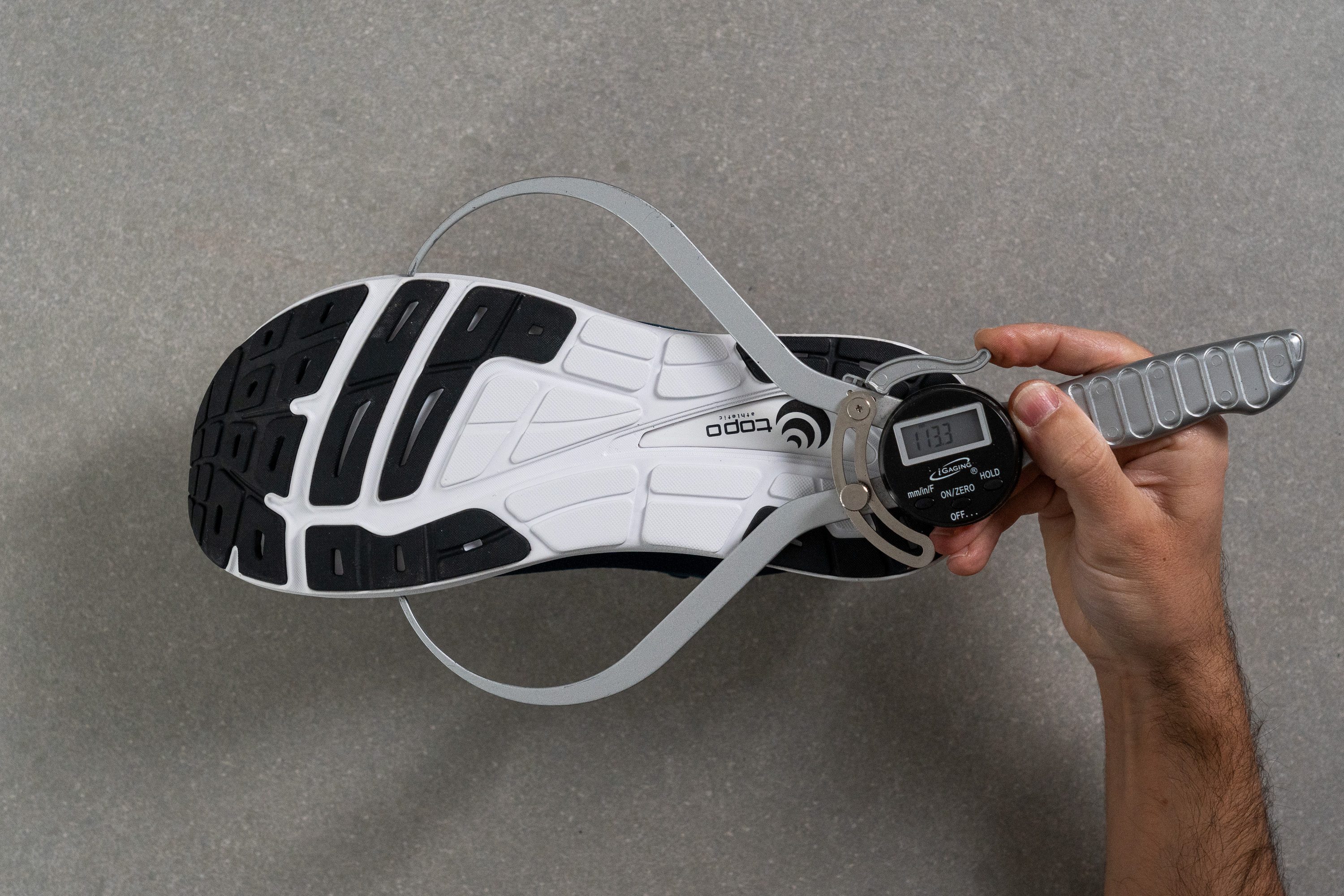
| Topo Phantom 3 | 113.3 mm |
| Media | 114.4 mm |
Anchura de la mediasuela - talón
El talón mide 86,4 mm, así que es un poquito más estrecho que la media, pero tampoco es algo que nos cogiese desprevenidos. Los modelos de Topo suelen adaptarse mejor a los corredores de mediopié y de metatarsos, ya que su drop suele ser o bajo o medio. En este caso, el diseño más finito del talón nos parece un indicador más de este propósito.
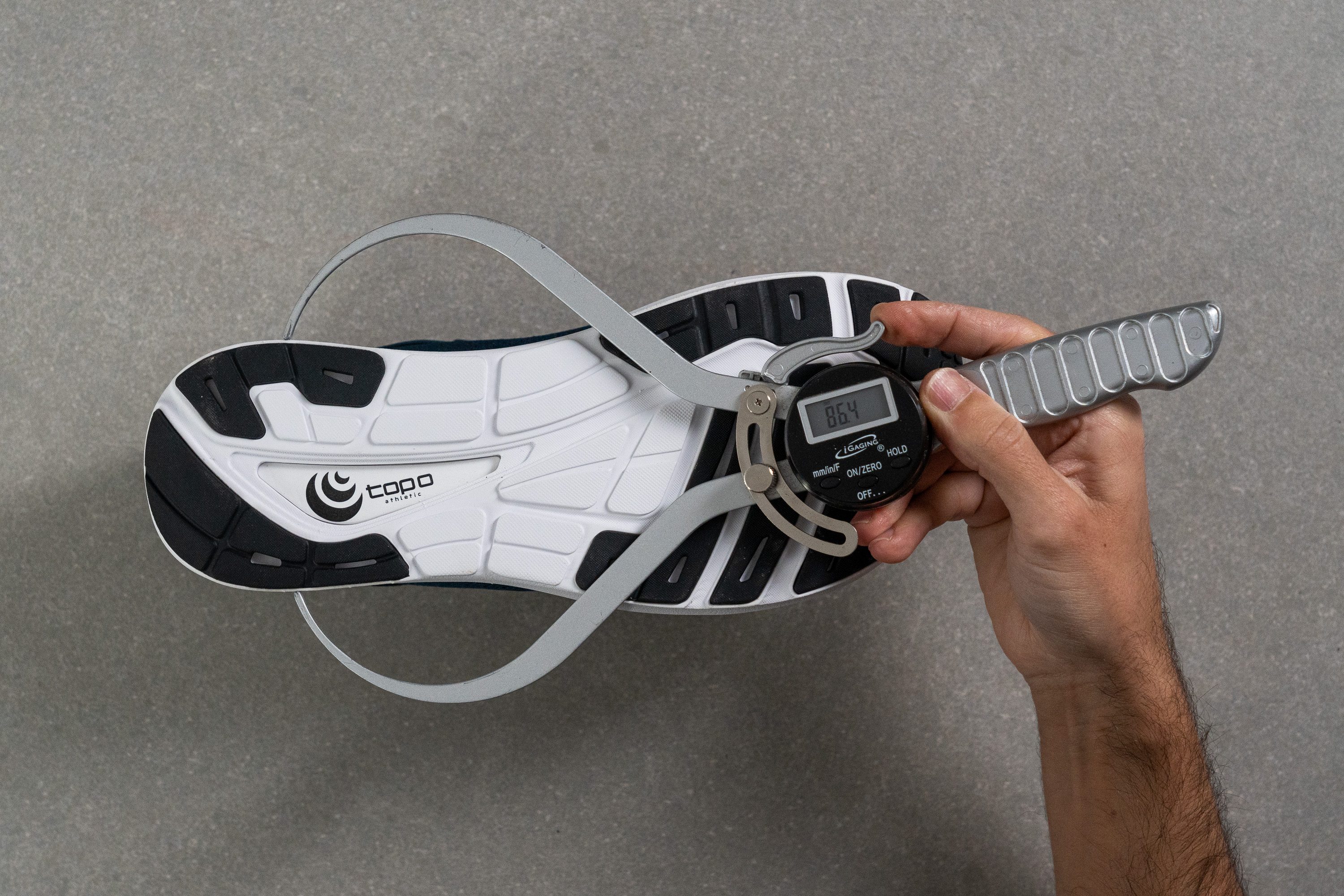
| Topo Phantom 3 | 86.4 mm |
| Media | 90.7 mm |
Durabilidad
Durabilidad de la parte delantera
Los agujeritos para el flujo de aire desempeñan un papel muy importante en la transpirabilidad, pero también hacen que el upper sea más vulnerable al desgaste.
En nuestra prueba Dremel lo comprobamos, ya que las Phantom 3 acabaron tan hechas polvo que no pudimos darles más que un 2/5 en durabilidad.
| Topo Phantom 3 | 2 |
| Media | 2.6 |
Durabilidad del acolchado del talón
Lo bueno es que la zona del talón sí que aguantó muy bien nuestra prueba Dremel. Su resistencia al desgaste hizo que terminase sin un rasguño prácticamente, así que le dimos un impecable 5/5.
| Topo Phantom 3 | 5 |
| Media | 3.4 |
Durabilidad de la suela
Como este modelo tiene tan poco caucho en el antepié, cerramos los ojos y pedimos un deseo: por favor, ¡que sea duradero! Después de apagar el Dremel medimos los daños, y resulta que son exactamente de 1,0 mm. Este resultado es estándar, así que debería las Phantom 3 deberían ofrecerte un kilometraje respetable.
Vamos, que te podemos asegurar que no estás ante unas de esas zapatillas de running ultraduraderas que están diseñadas para resistir el desgaste.
| Topo Phantom 3 | 1.0 mm |
| Media | 1.1 mm |
Grosor de la suela
Para compensar la limitada cobertura de caucho, la suela exterior tiene un grosor de 3,7 mm, que es un poquito más alto que la media.
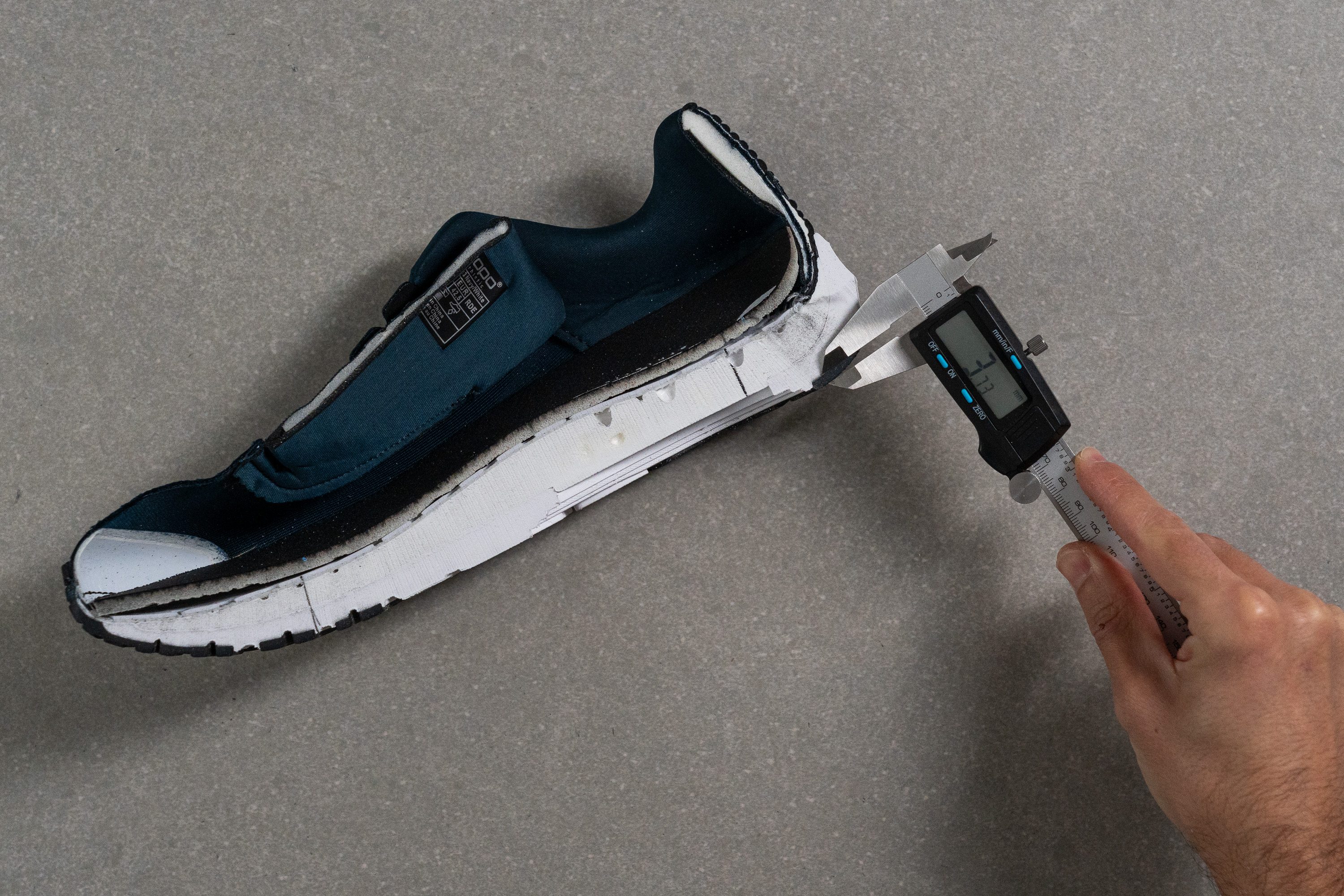
| Topo Phantom 3 | 3.7 mm |
| Media | 3.2 mm |
Varios
Grosor de la plantilla
La plantilla Ortholite de las Topo Athletic Phantom 3 es estándar, con un grosor de 4,4 mm.
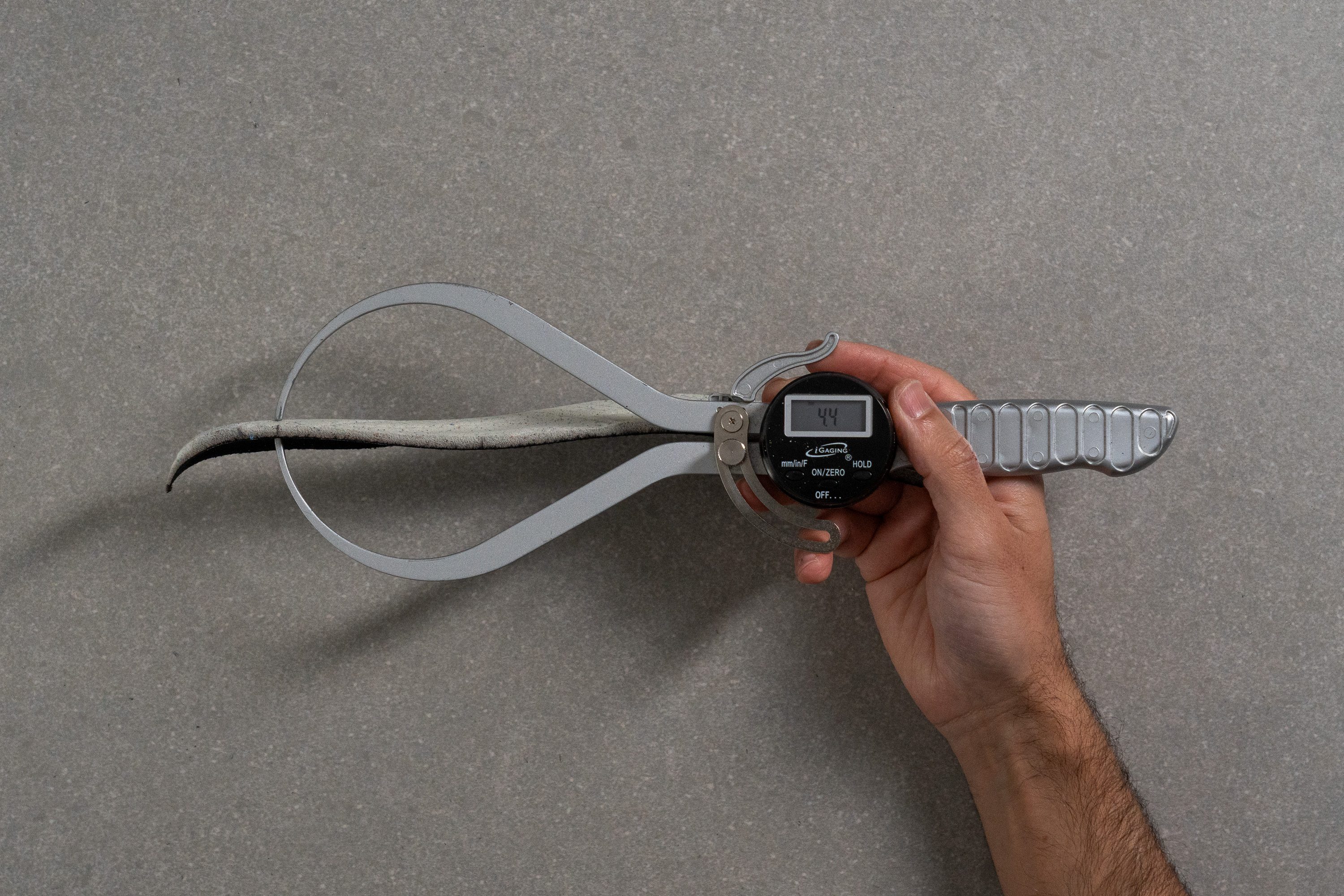
| Topo Phantom 3 | 4.4 mm |
| Media | 4.5 mm |
Plantilla extraíble
La plantilla Ortholite de las Phantom 3 no está pegada, así que no cuesta nada quitarla. Eso sí, como es una de las características más destacadas de estas zapatillas, cambiarla significa perder sus ventajas de comodidad y rendimiento.
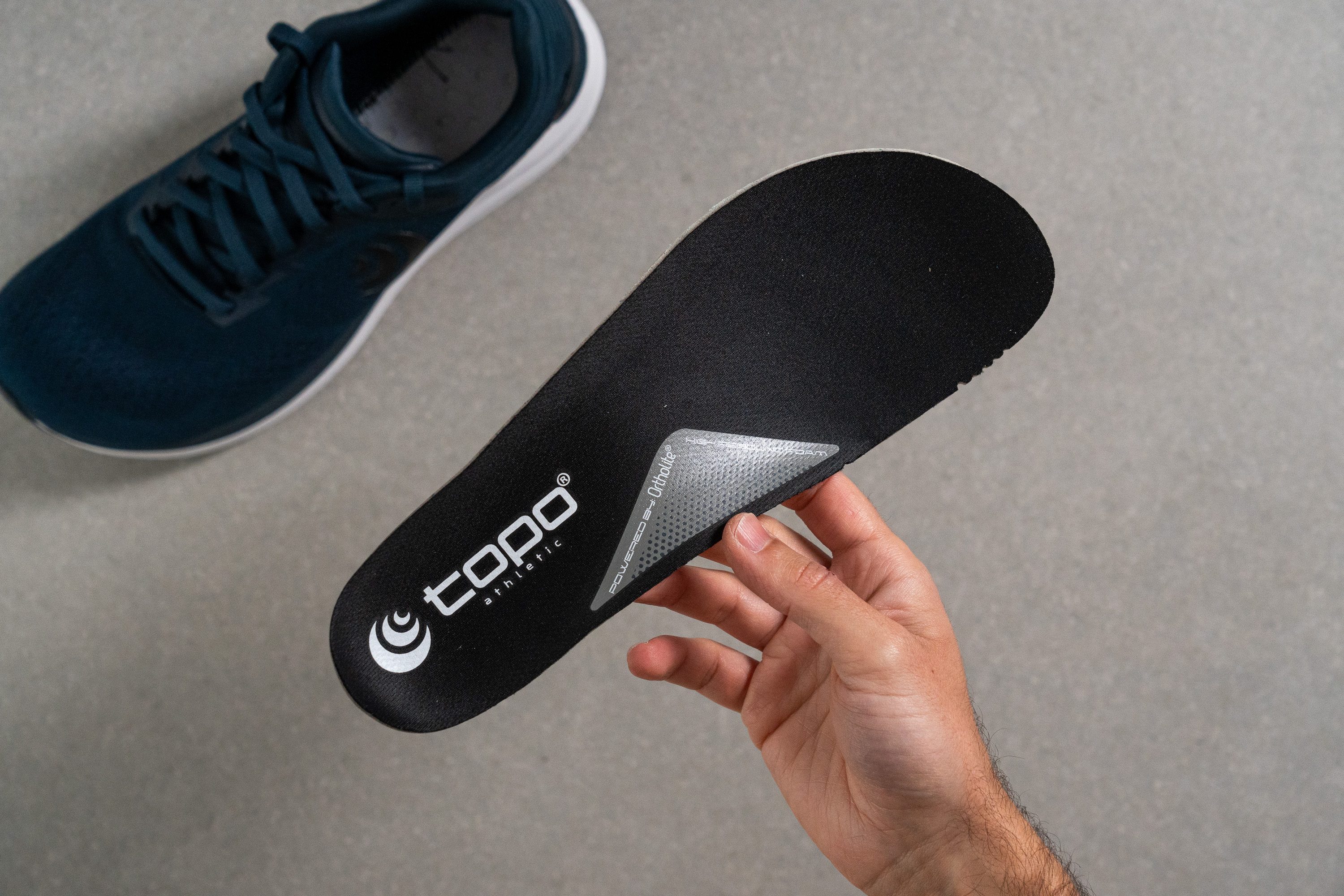
| Topo Phantom 3 | Sí |
Rigidez de la mediasuela en frío (%)
Como la espuma ZipFoam es un compuesto hecho con EVA, no nos sorprendió que su rendimiento en nuestra prueba de frío fuese tan terrible. Después de estar 20 minutos en nuestro congelador, nuestro durómetro marcó un aumento del 43 % en la rigidez del material. La verdad es que es un resultado bastante decepcionante, sobre todo para unas zapatillas que ya son más bien firmes de por sí...
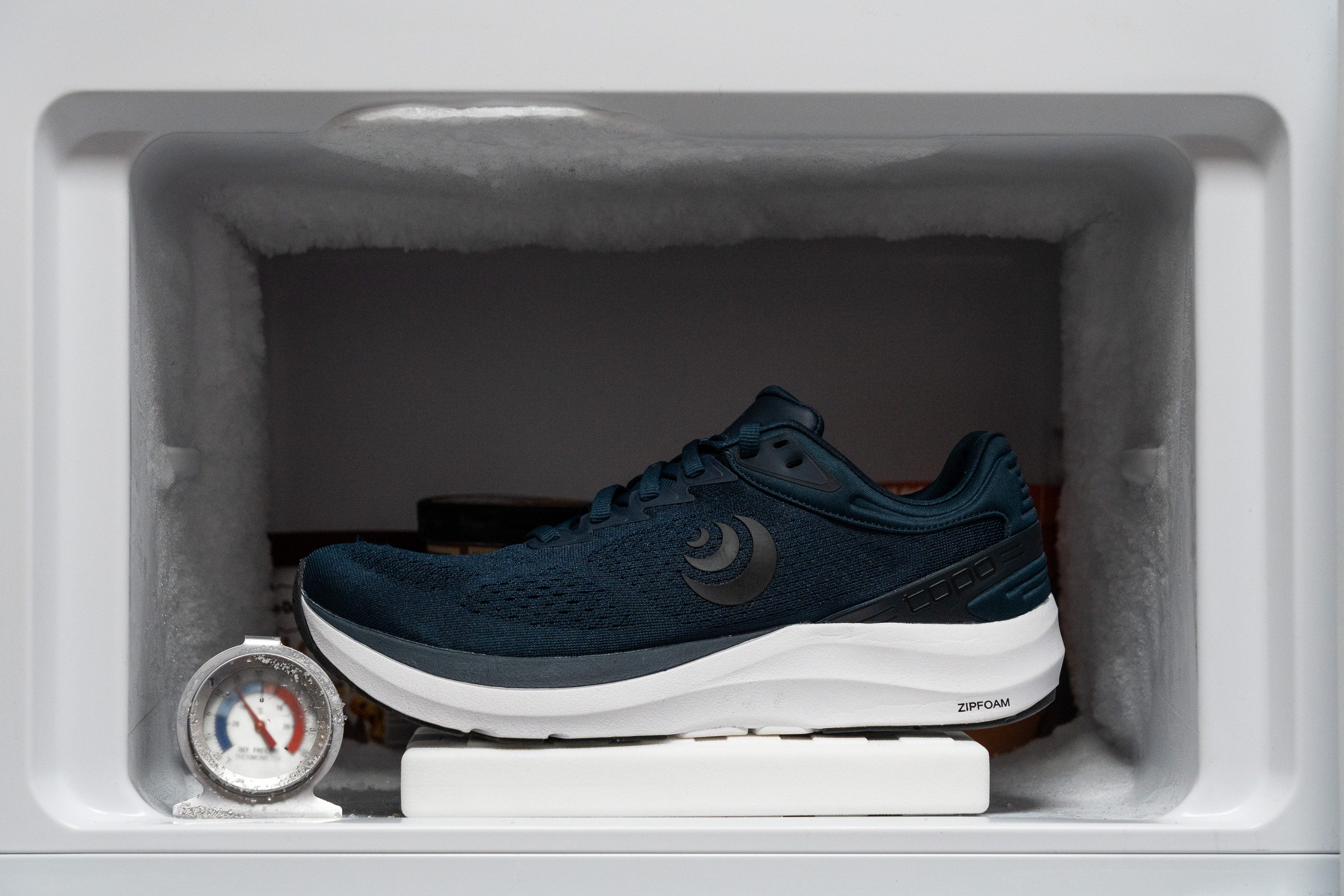
| Topo Phantom 3 | 43% |
| Media | 24% |
Elementos reflectantes
Las Phantom 3 no tienen elementos reflectantes, y la verdad es que nos parece una oportunidad perdida. Ponérselos a las próximas versiones nos parece una idea estupenda para así mejorar la visibilidad cuando salgamos a correr con poca luz.
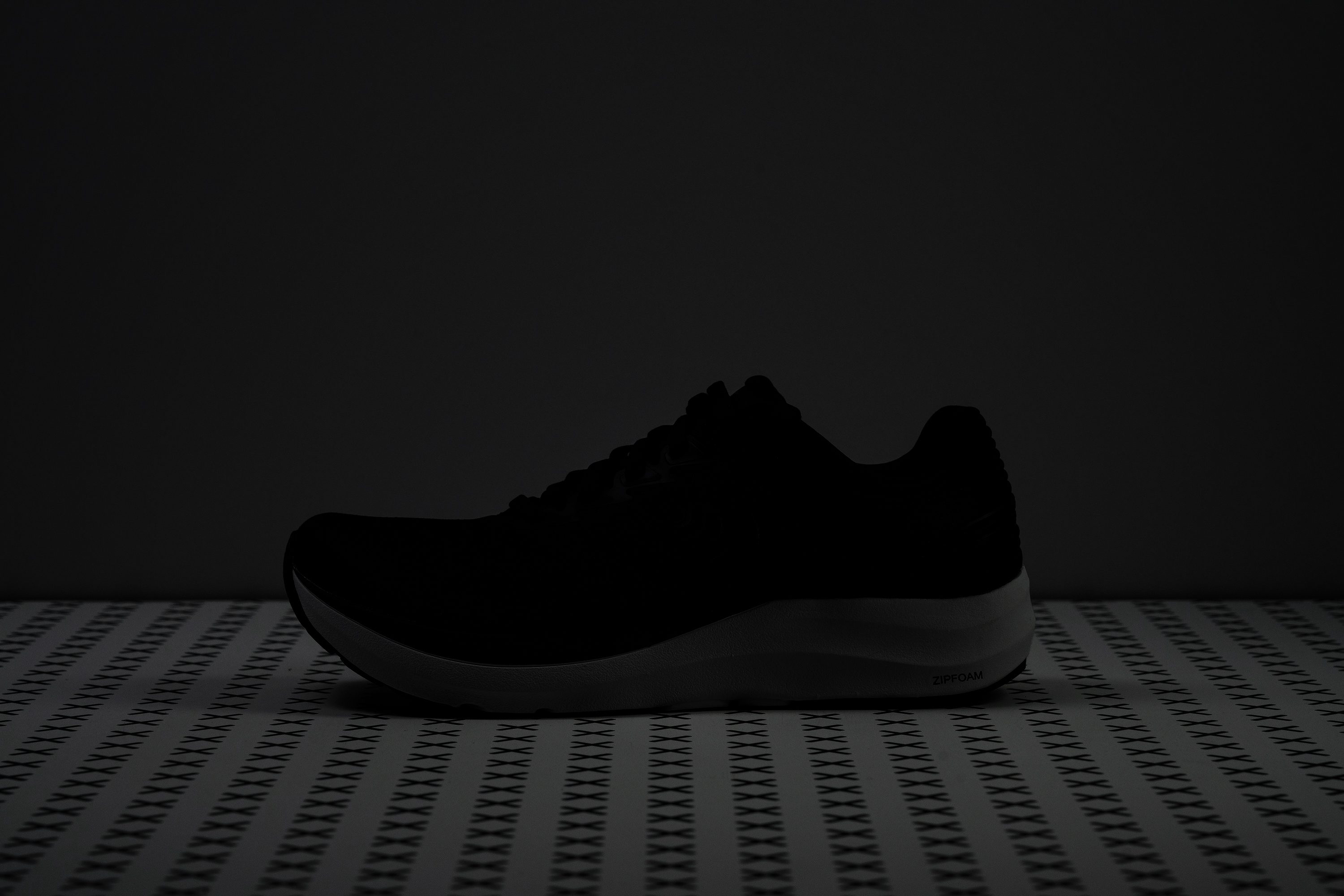
| Topo Phantom 3 | No |
Acolchado de la lengüeta
Topo ha simplificado al máximo el sistema de cordones: ojales perforados y cordones planos y finitos. ¡Punto!
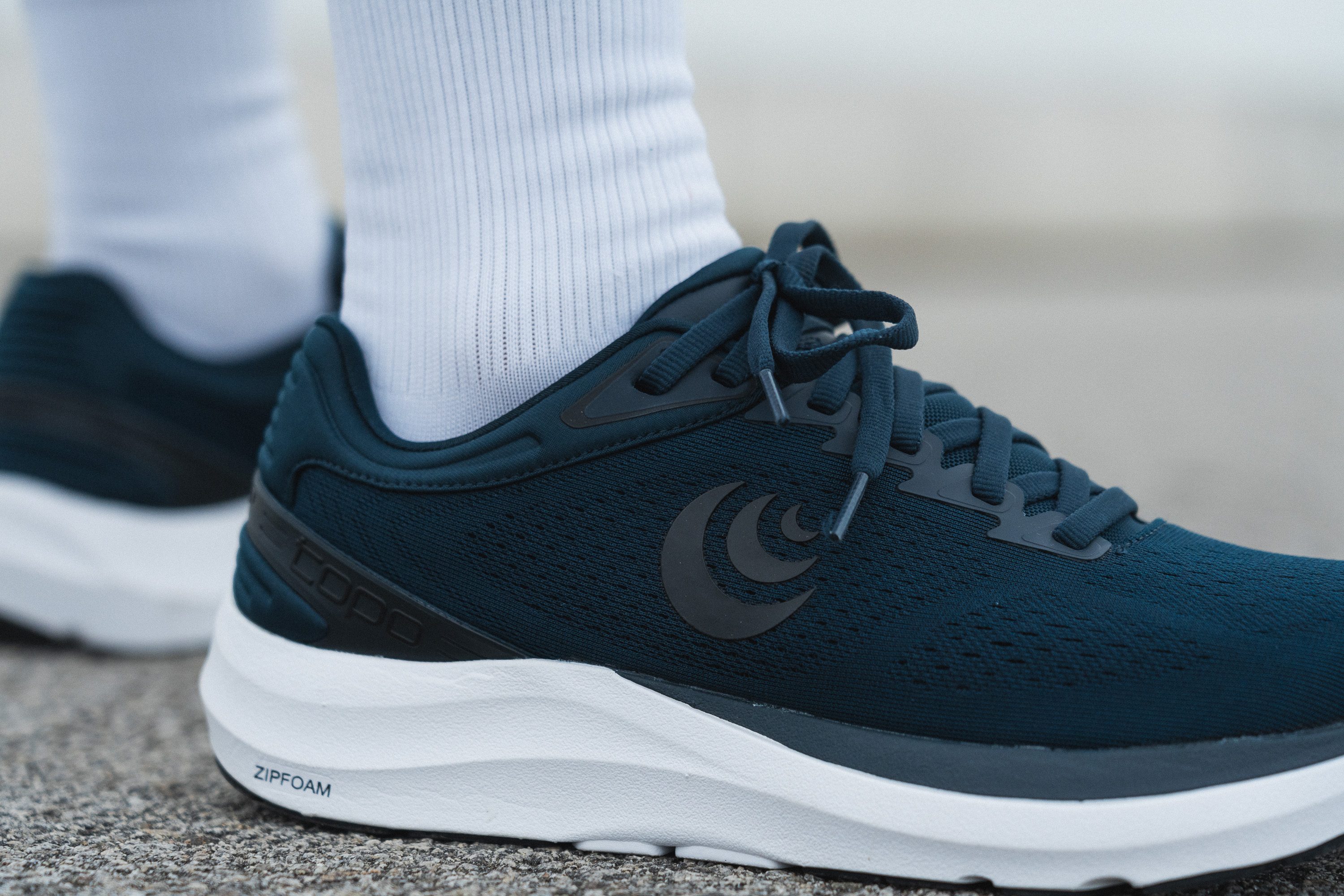
Cuando medimos el grosor de la lengüeta, nuestro calibre marcó un resultado estándar de 5,9 mm. Creemos que la marca ha dado en el clavo en cuanto a comodidad y peso, así que es ideal para unas zapatillas de entrenamiento diario.
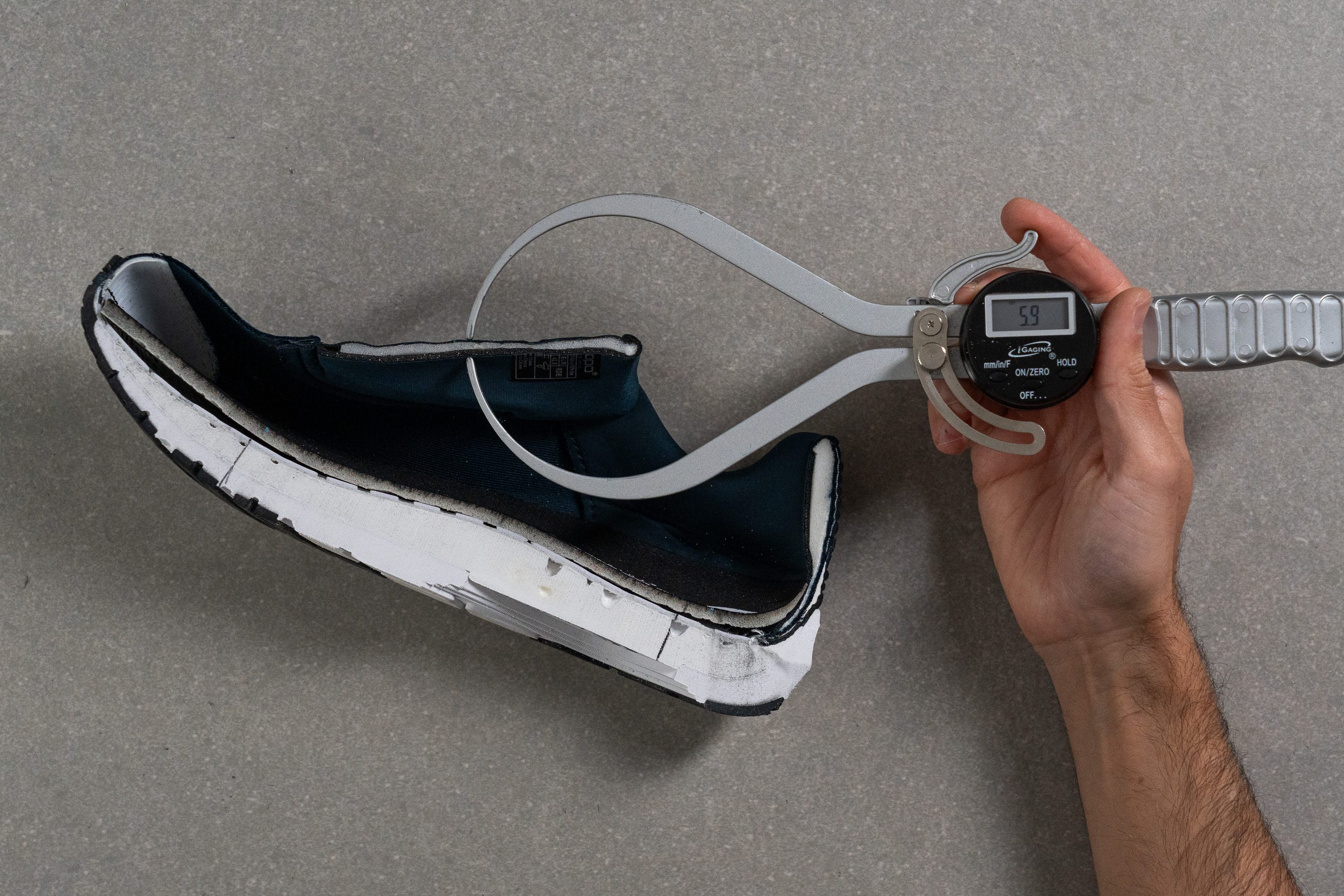
| Topo Phantom 3 | 5.9 mm |
| Media | 5.8 mm |
Lengüeta: tipo de refuerzo
A ver, si tenemos en cuenta lo que cuestan estas zapatillas, una lengüeta reforzada es un detalle lógico que deberían tener. Es más, no nos habría importado que pesasen un poquito más si eso significa conseguir esta mejora.

| Topo Phantom 3 | Ninguno |
Precio
Las Phantom 3 son unas zapatillas de entrenamiento diario sencillitas, sin florituras, que están diseñadas para ir sumando kilómetros de forma fiable, y creemos que ofrecen una buena relación calidad-precio. No son nada que nos haya vuelto locos, ni tienen características modernísimas (como puede ser la espuma Pebax), pero podemos asegurarte que su precio también refleja esto.
| Topo Phantom 3 | $145 |
Tirador del talón
Las Phantom 3 no tienen un tirador en el talón, pero tampoco es que lo echásemos en falta. En su lugar, Topo ha añadido el nombre del modelo y su medida oficial del drop. La verdad es que es un detalle bastante chulo.
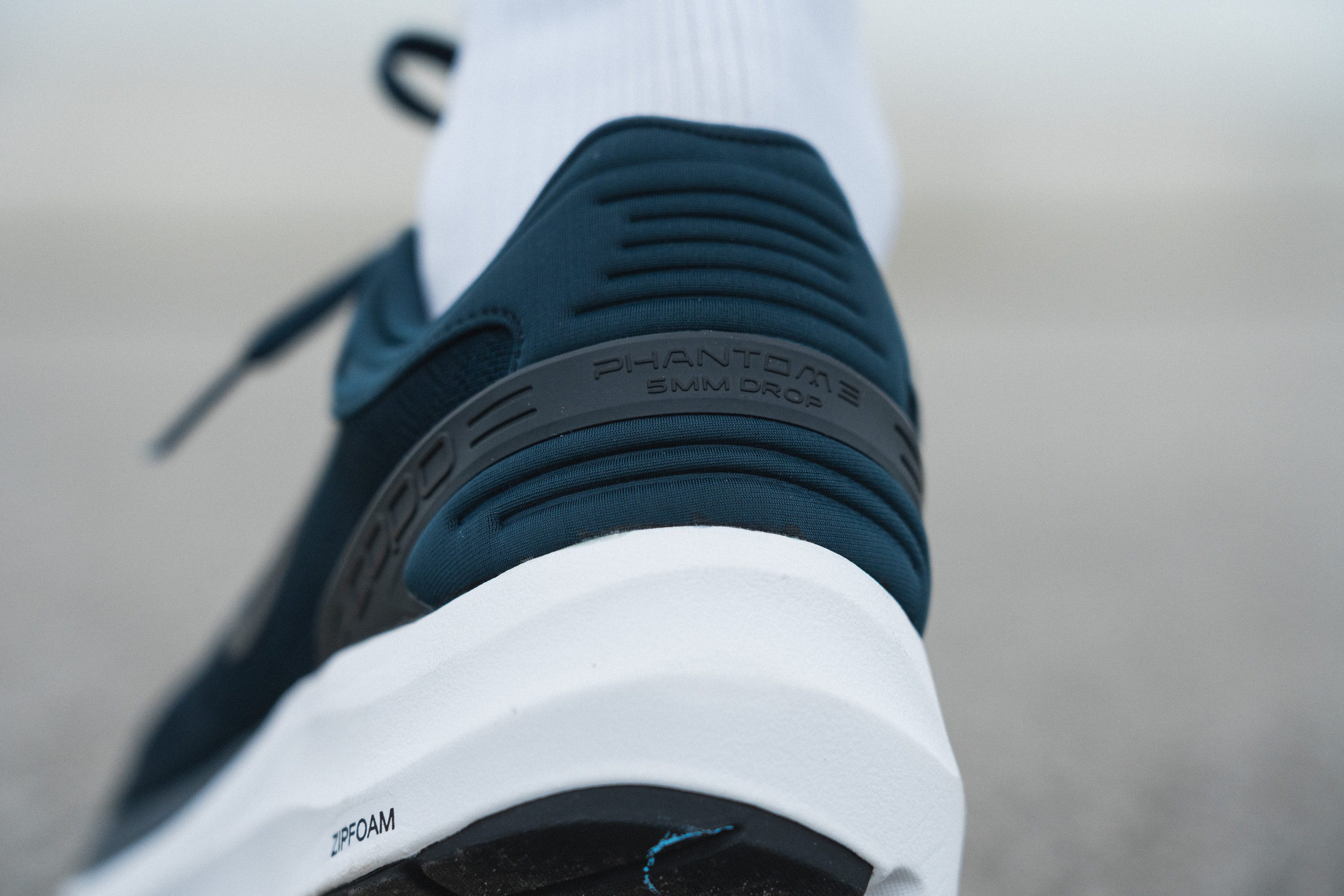
| Topo Phantom 3 | Ninguno |

